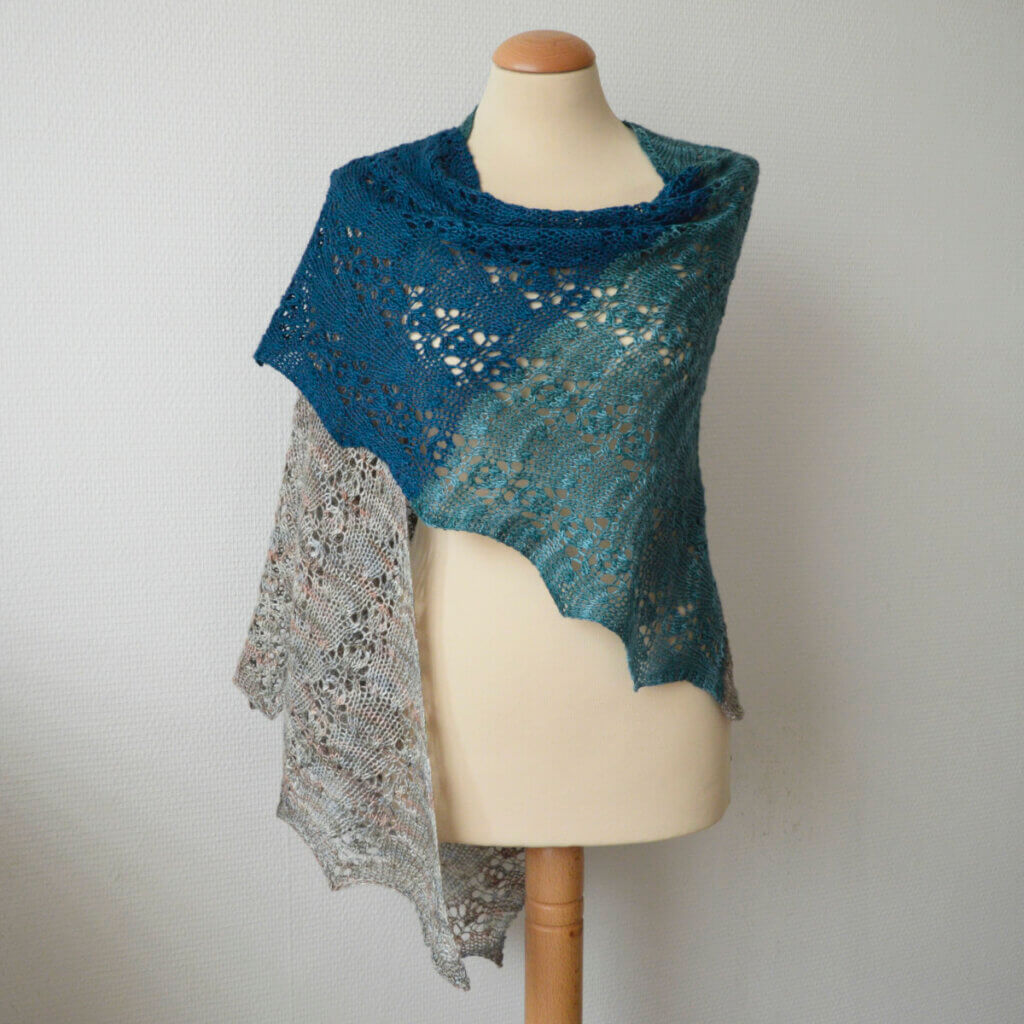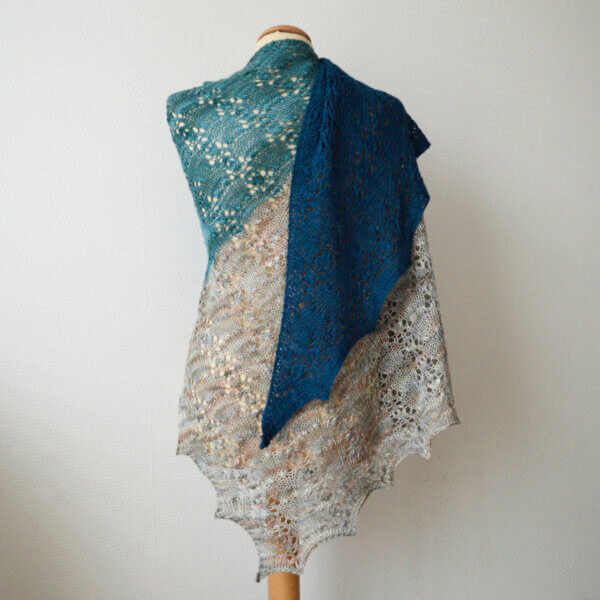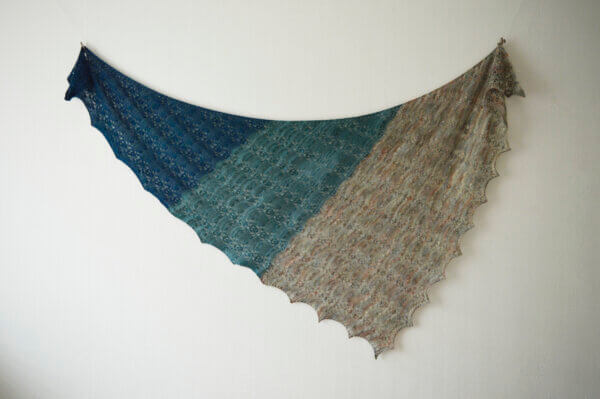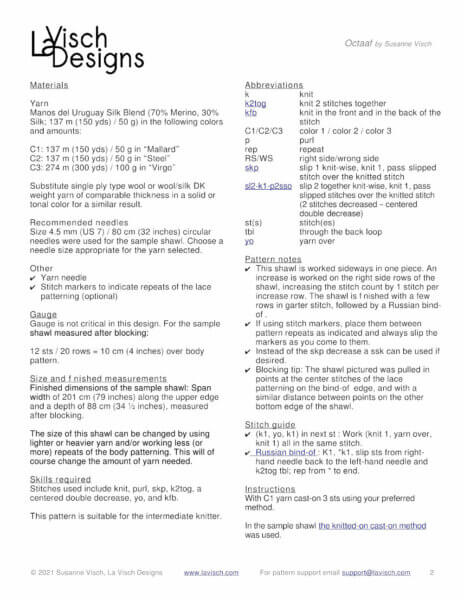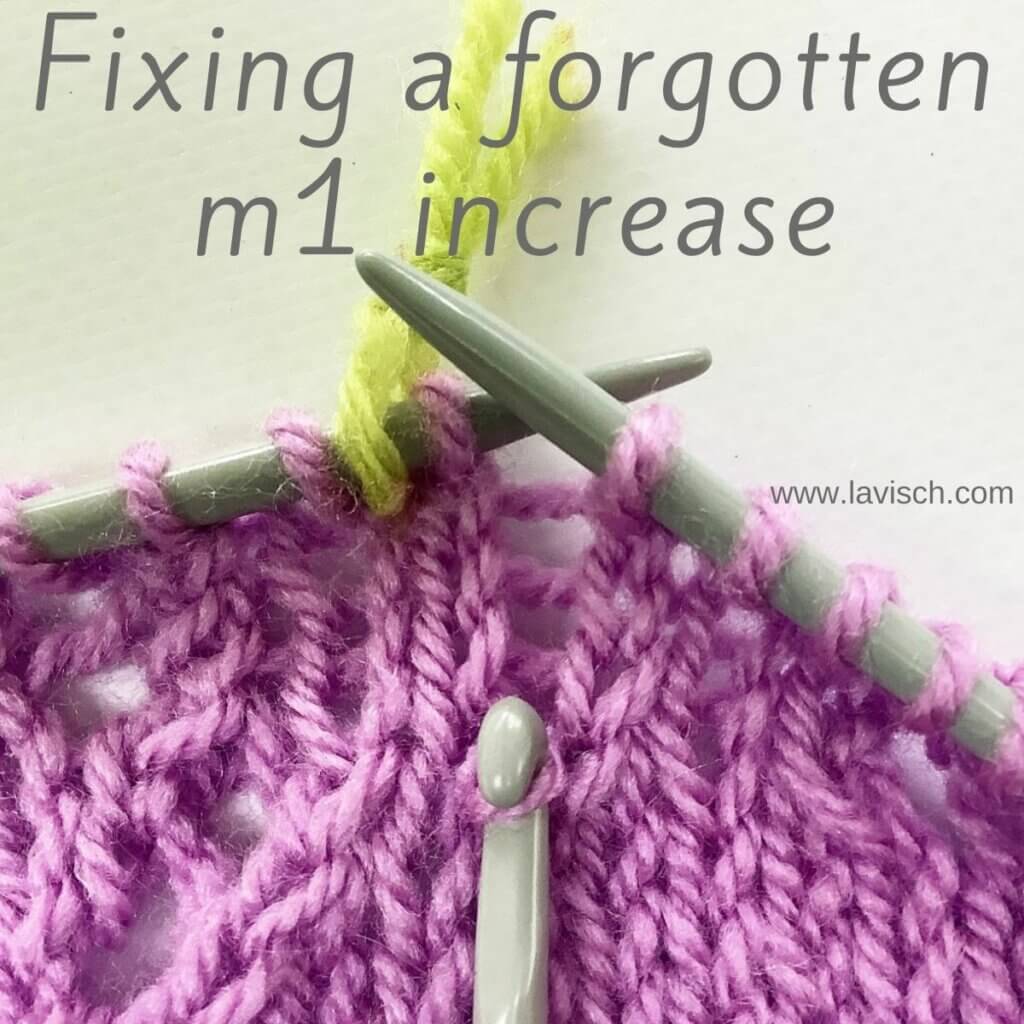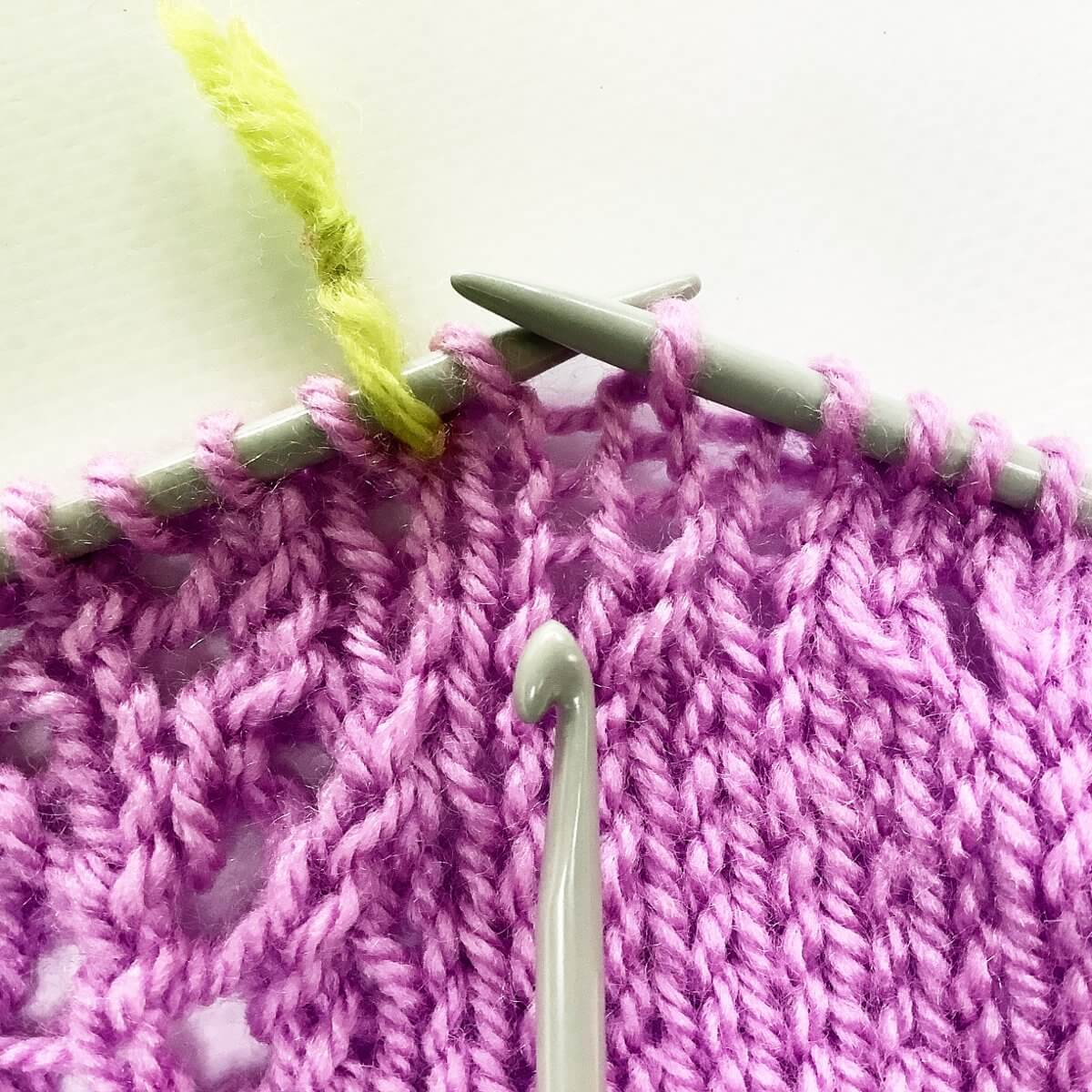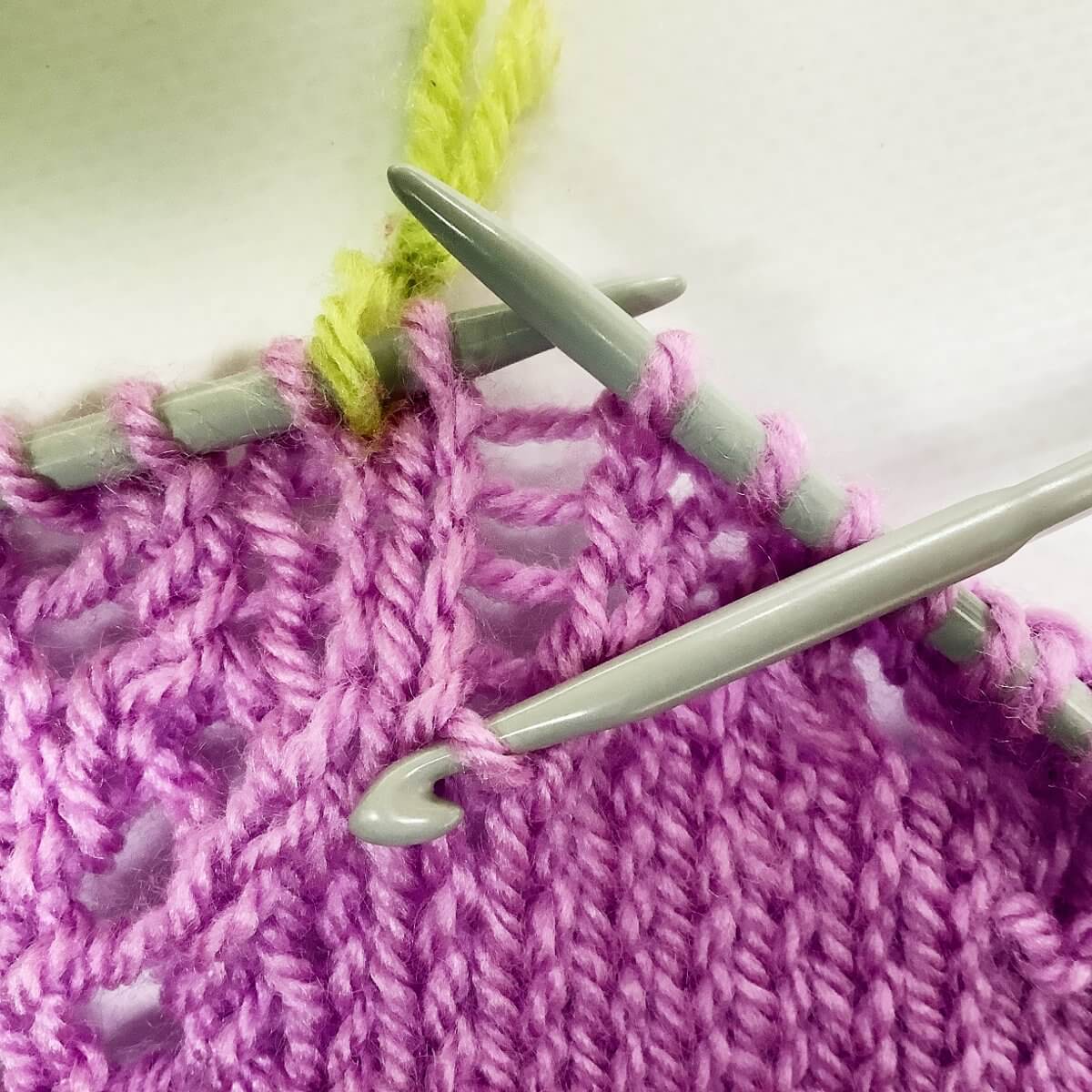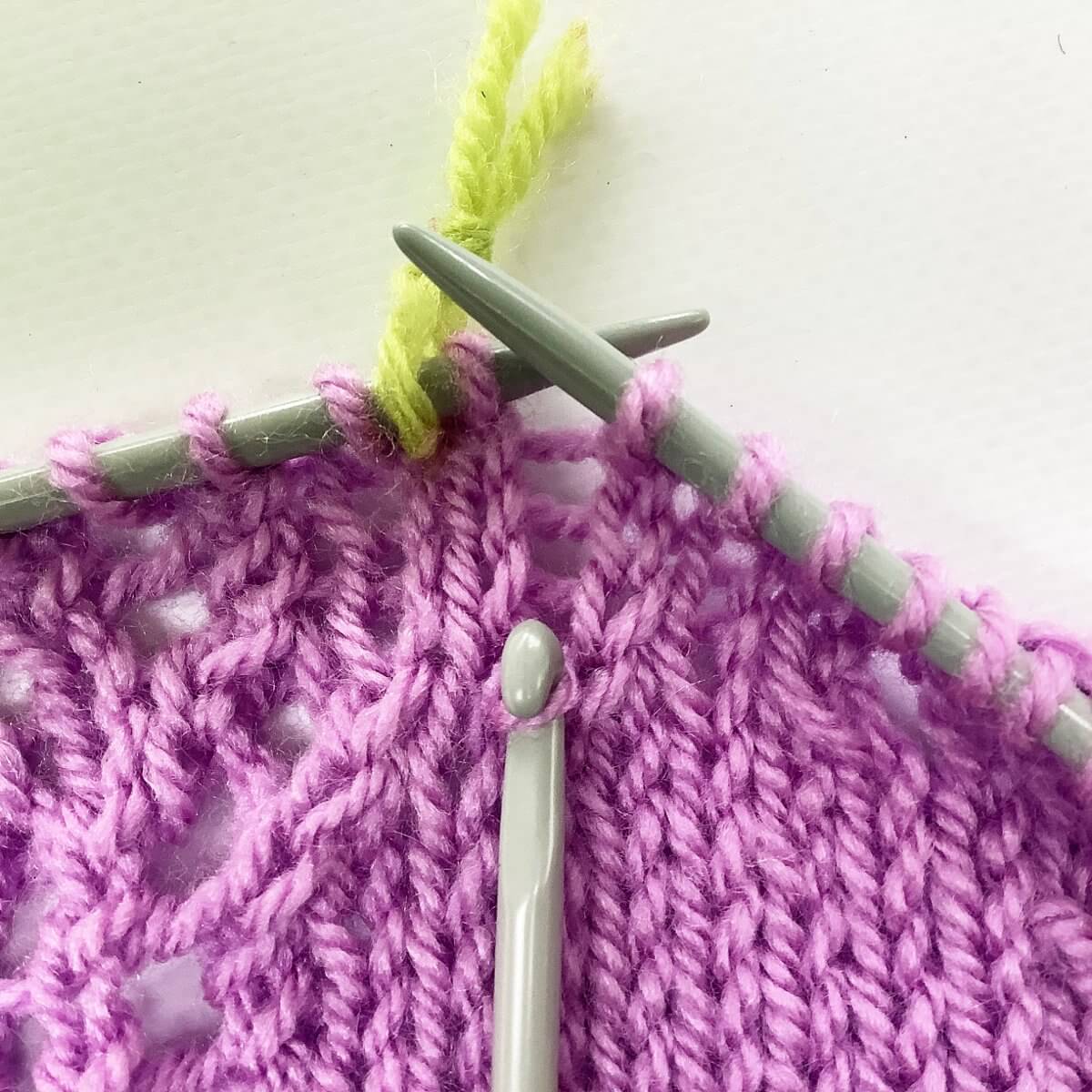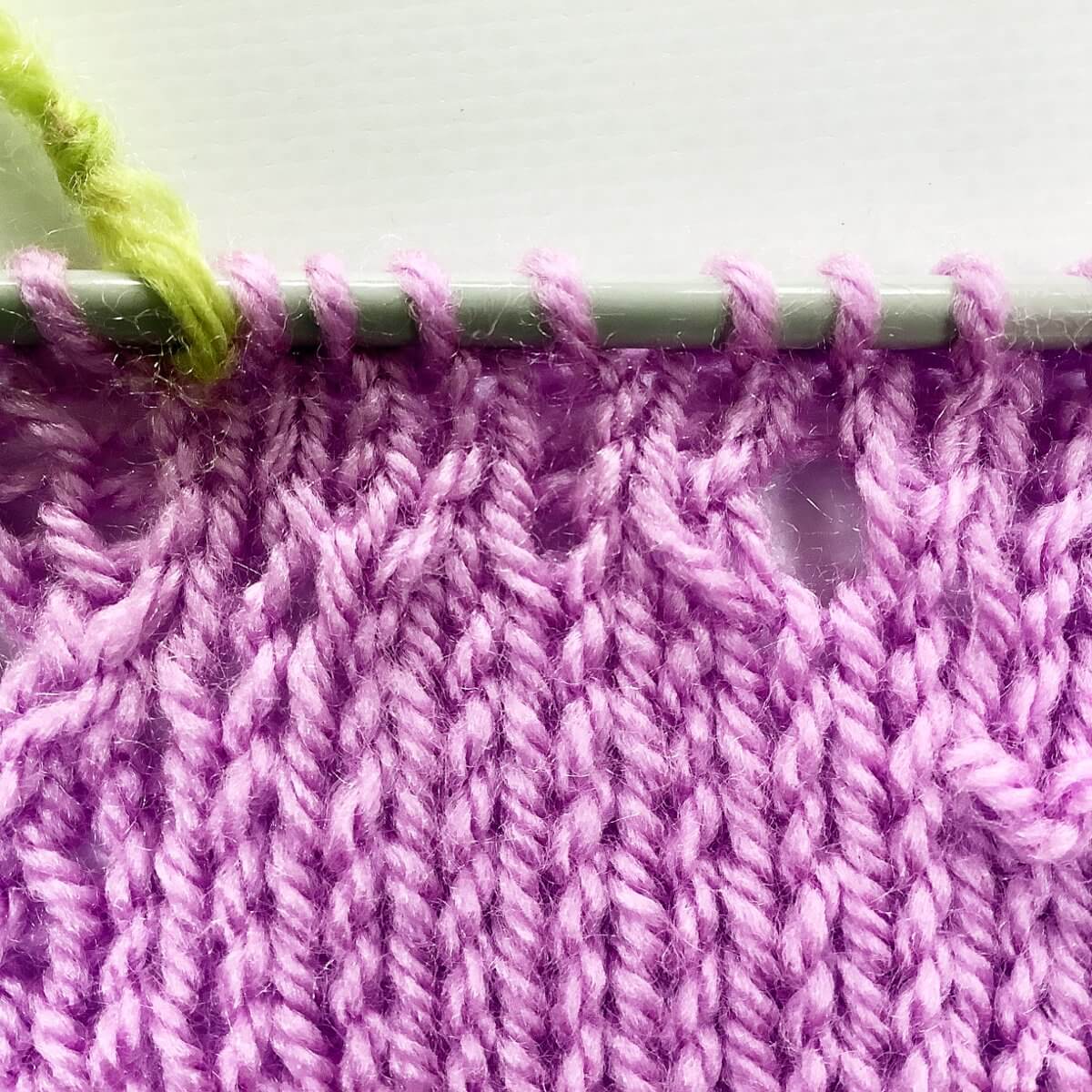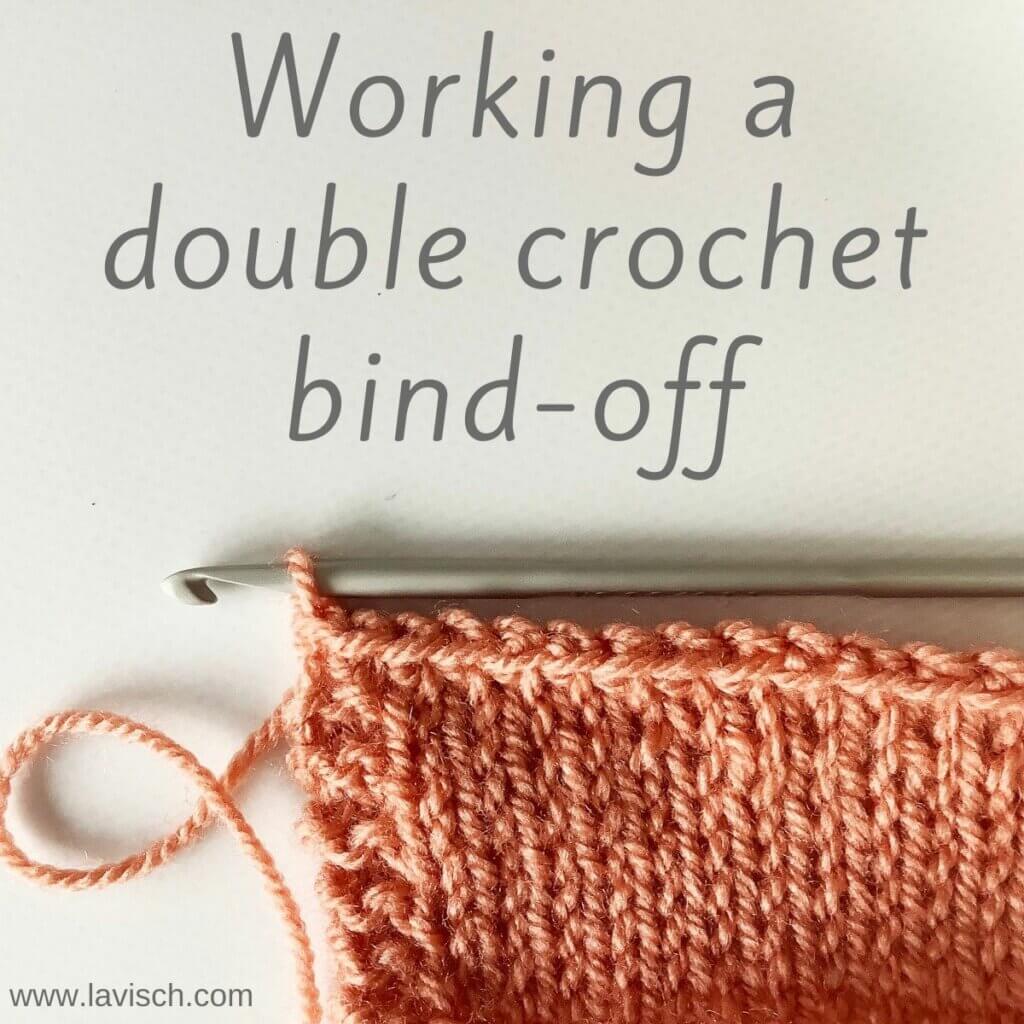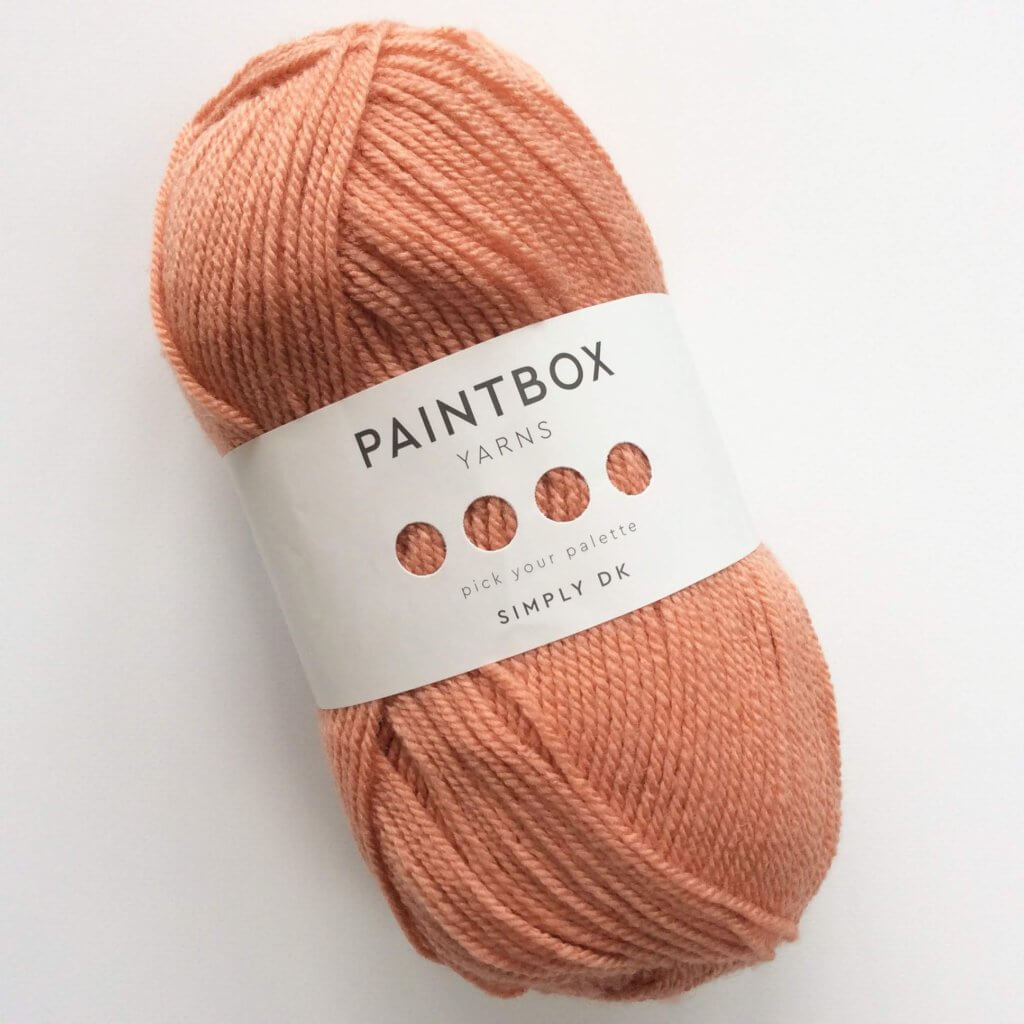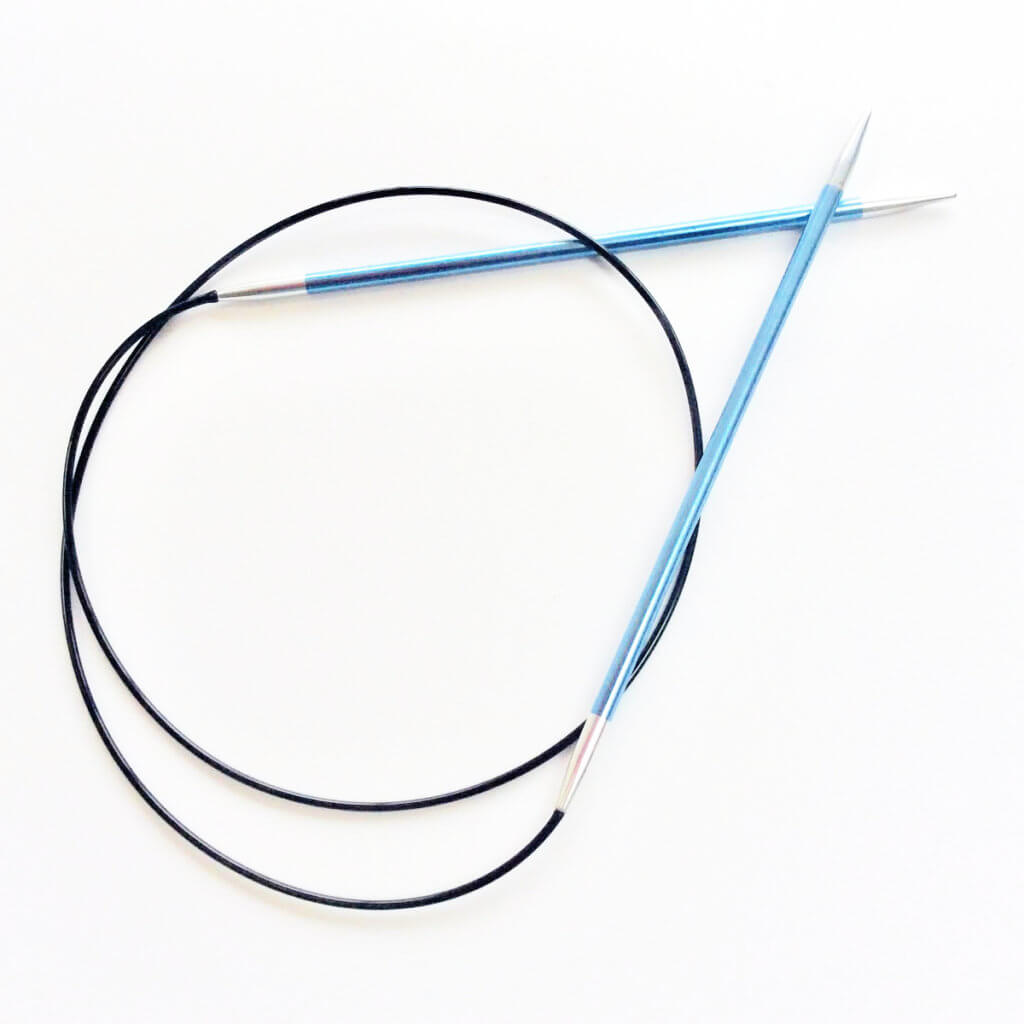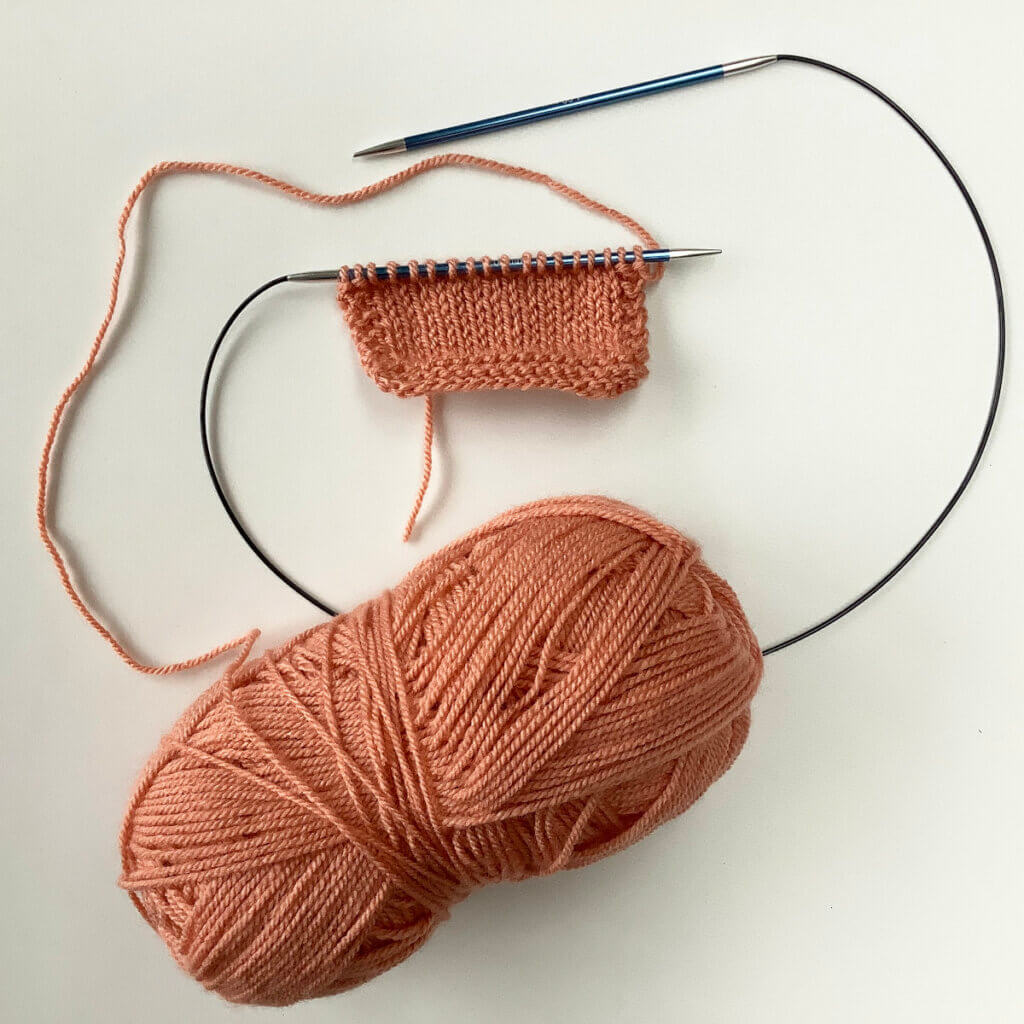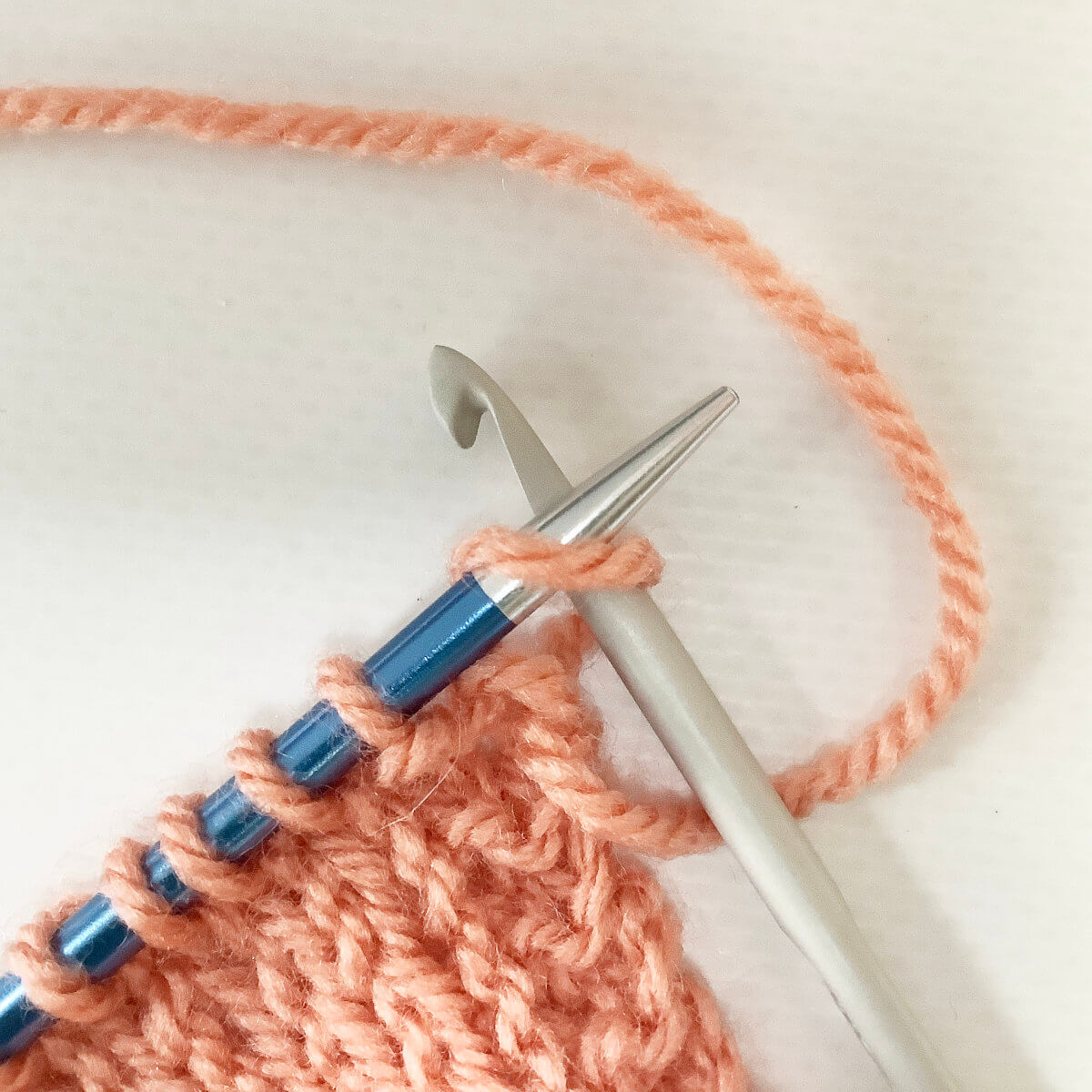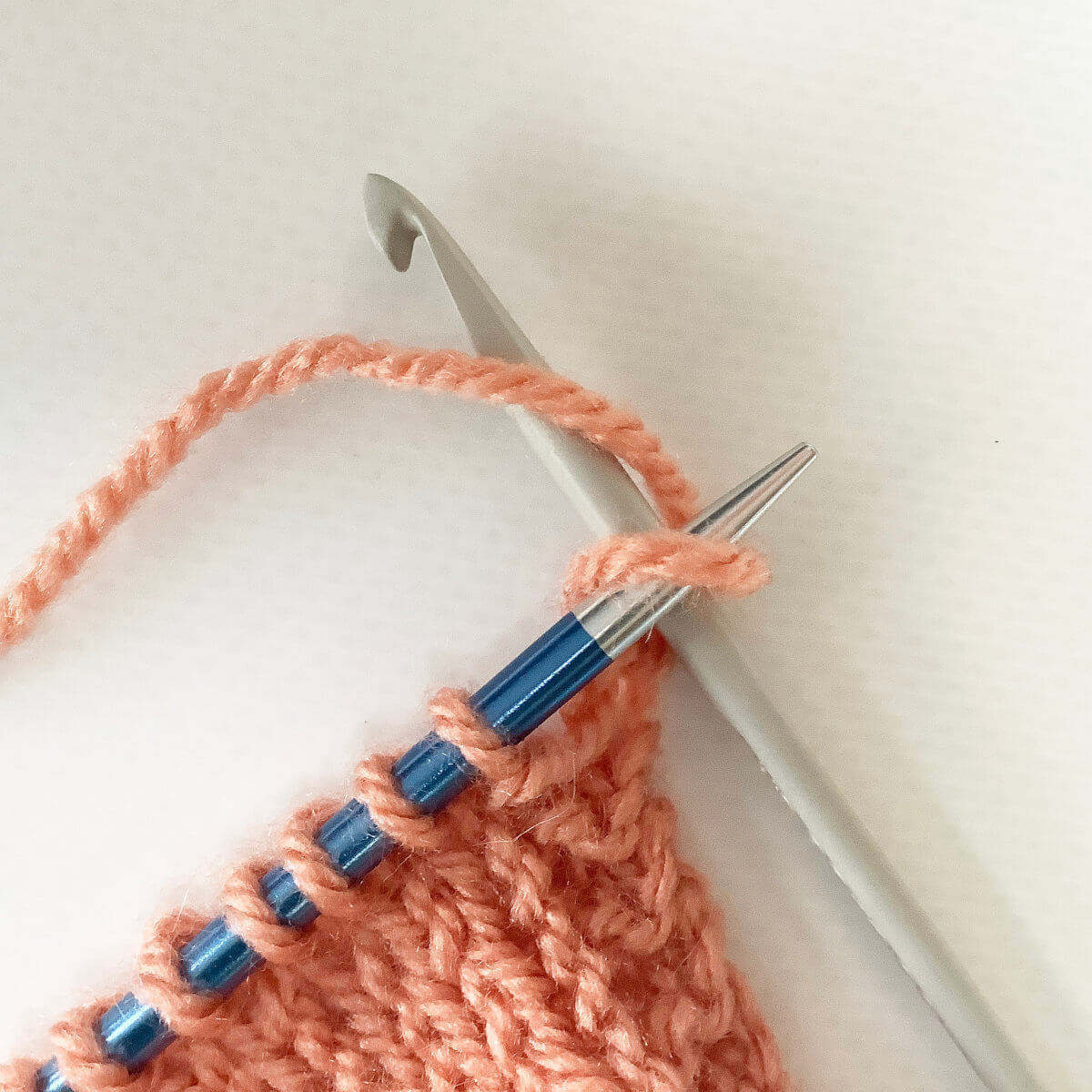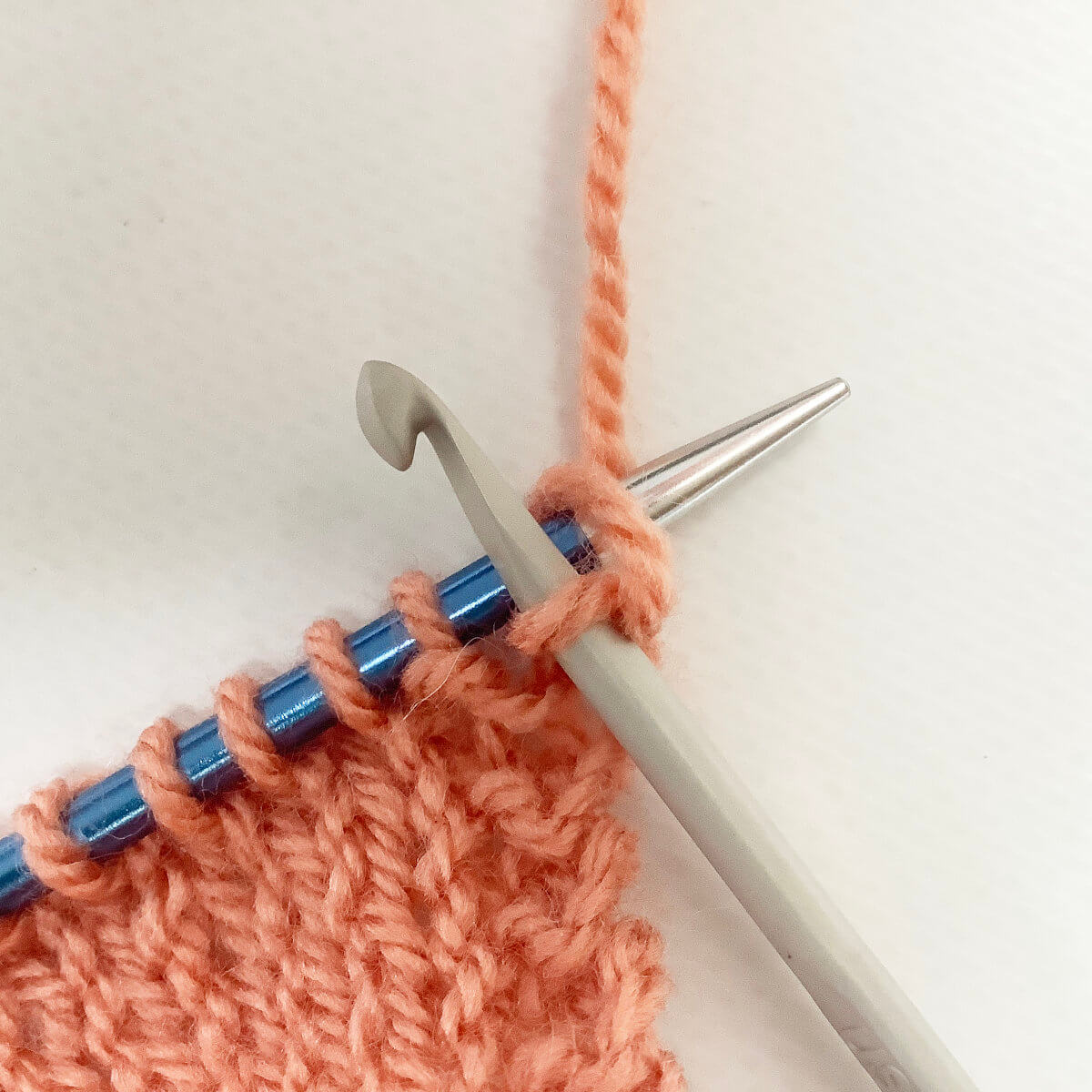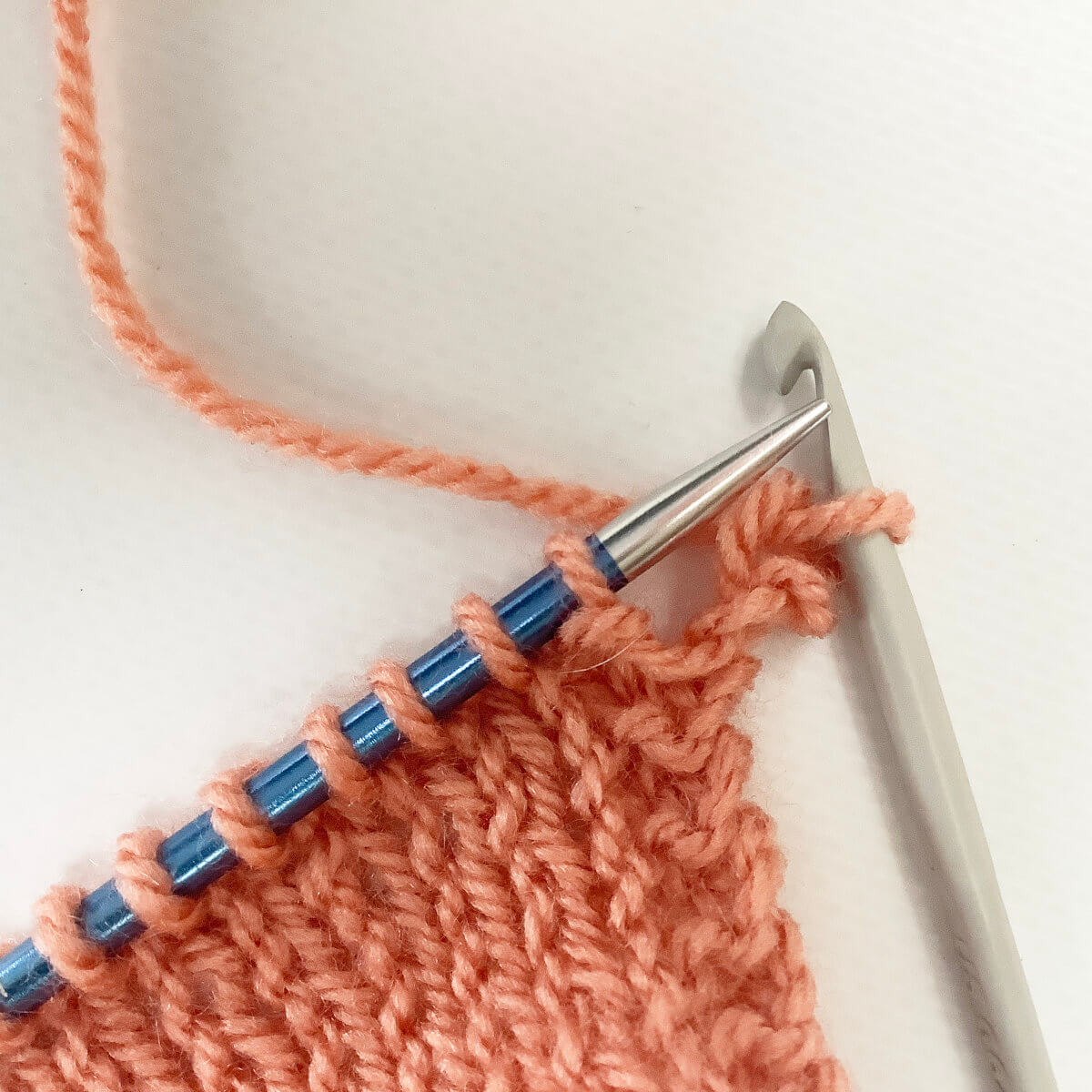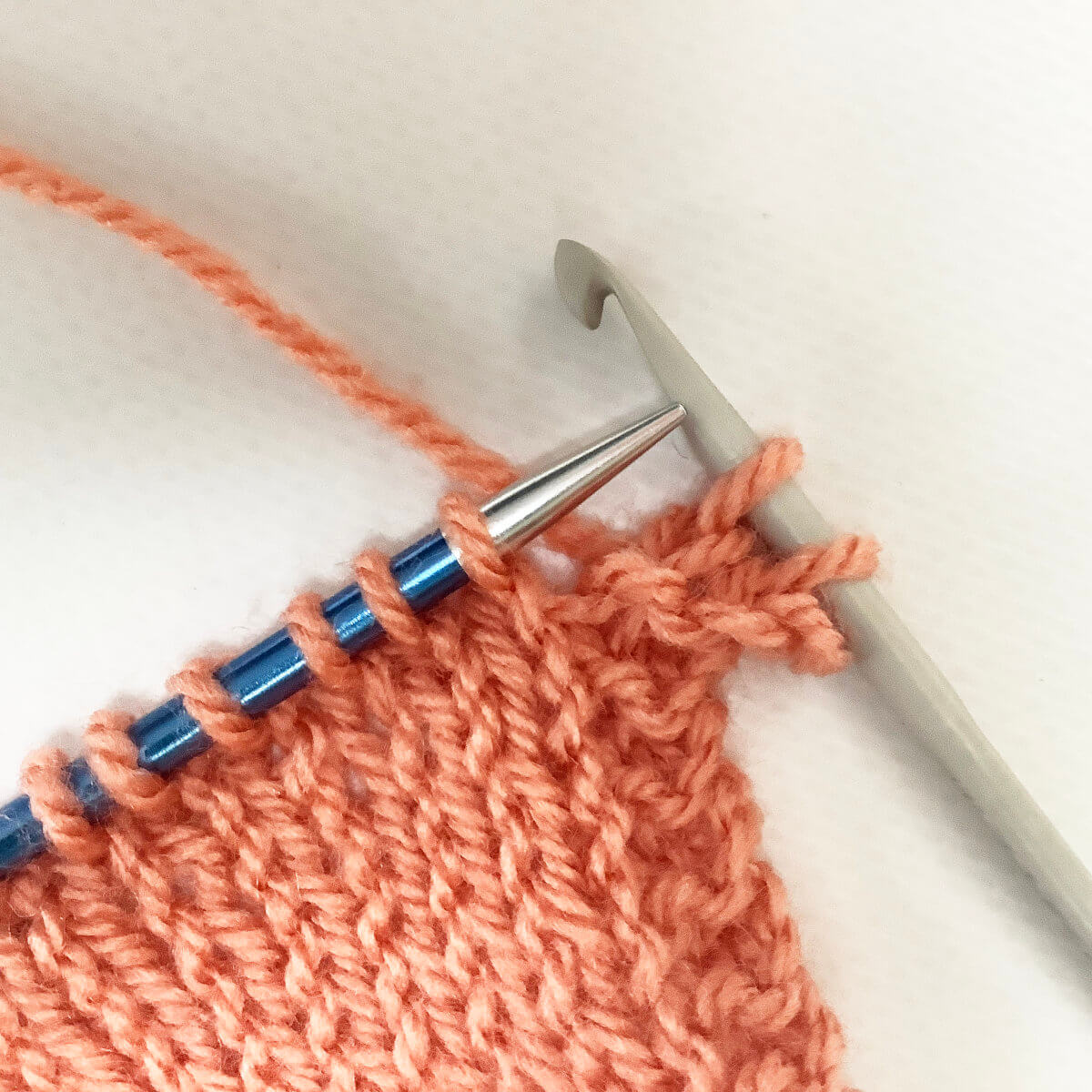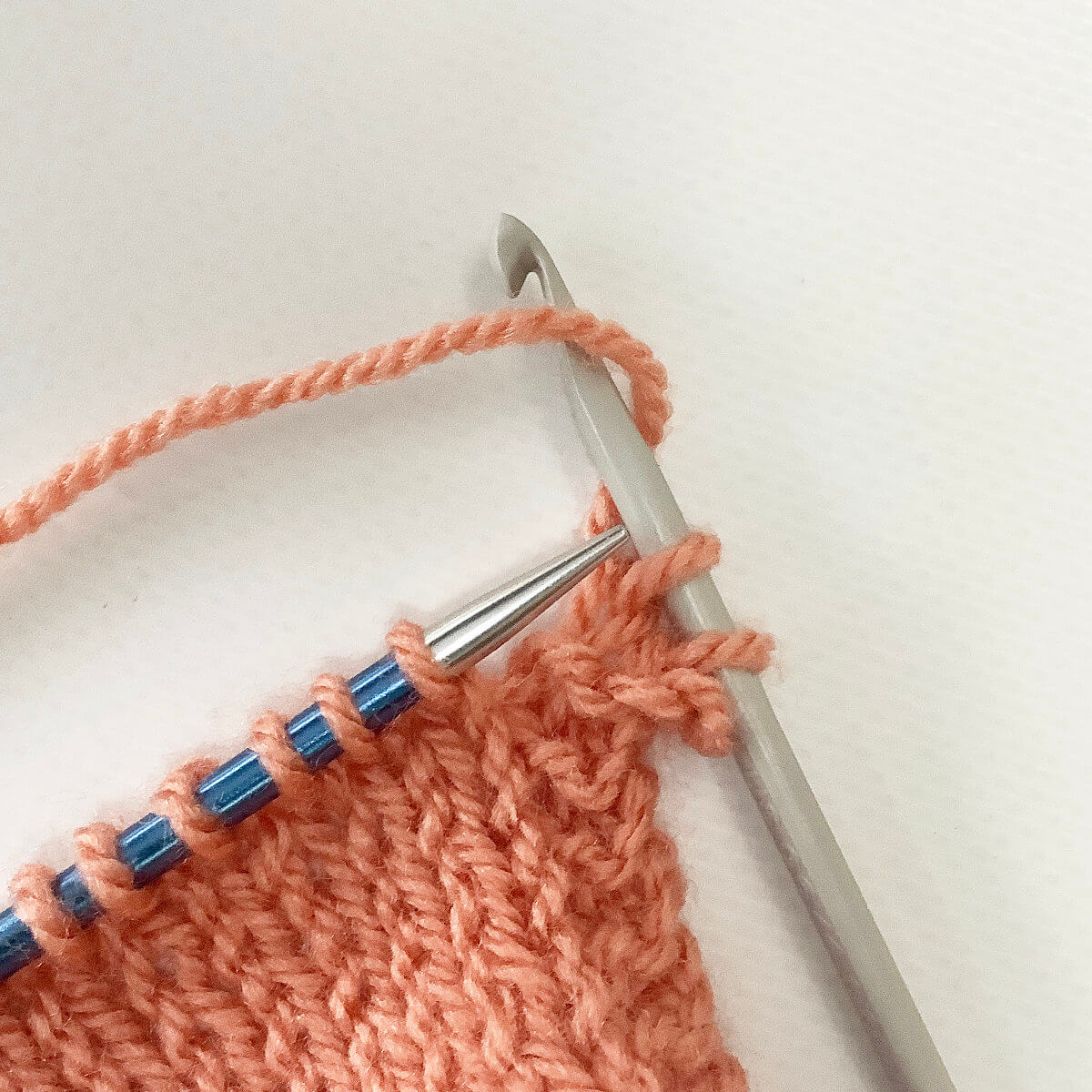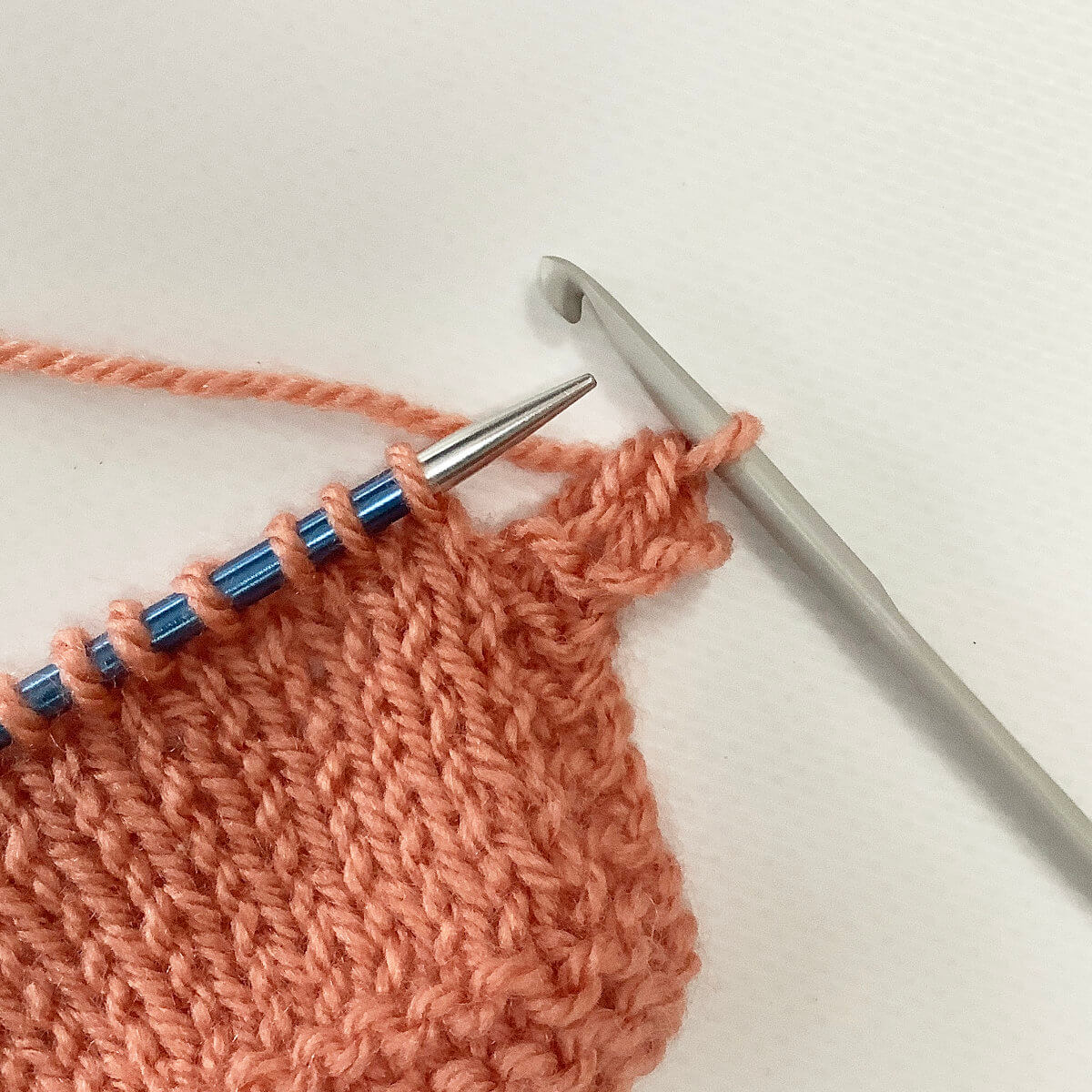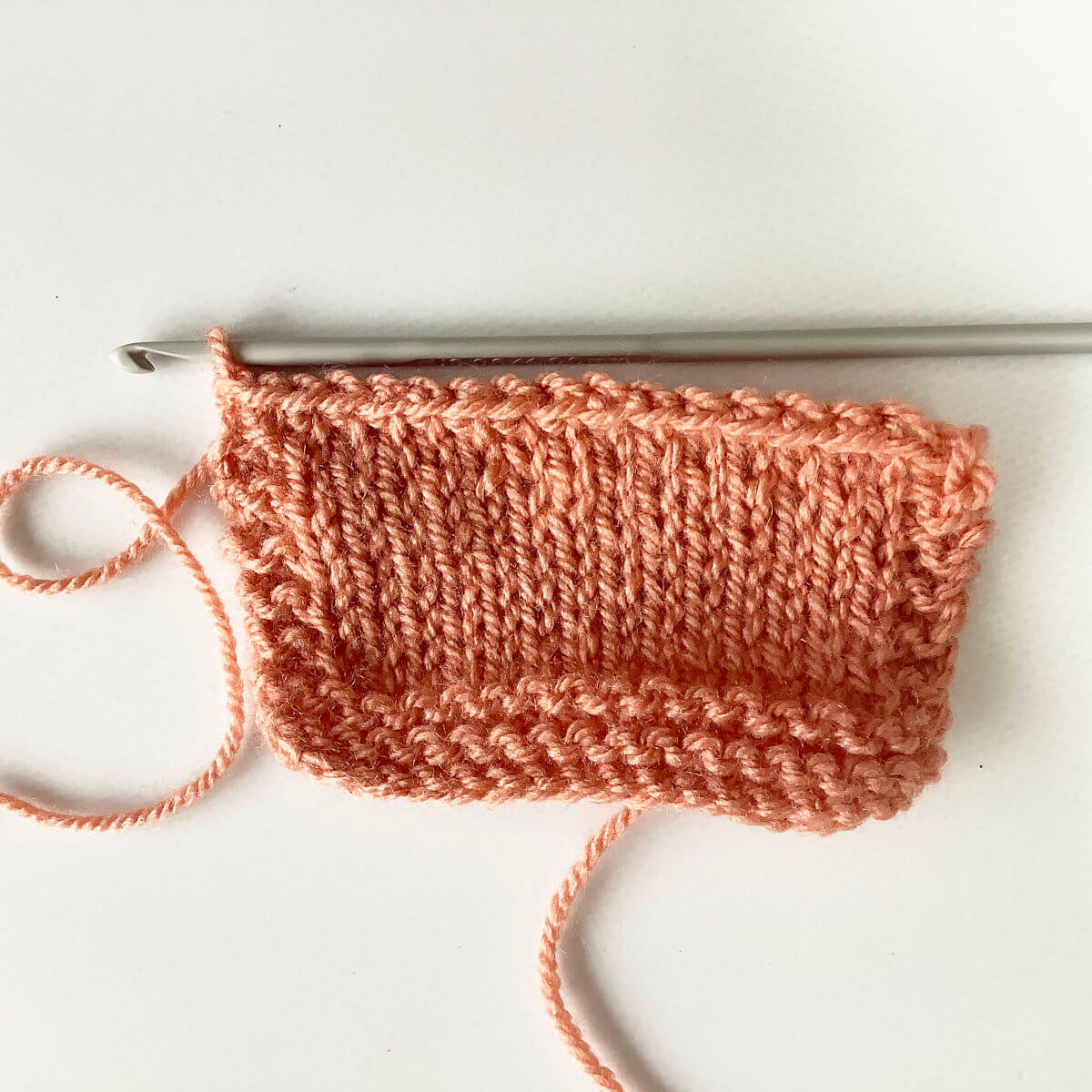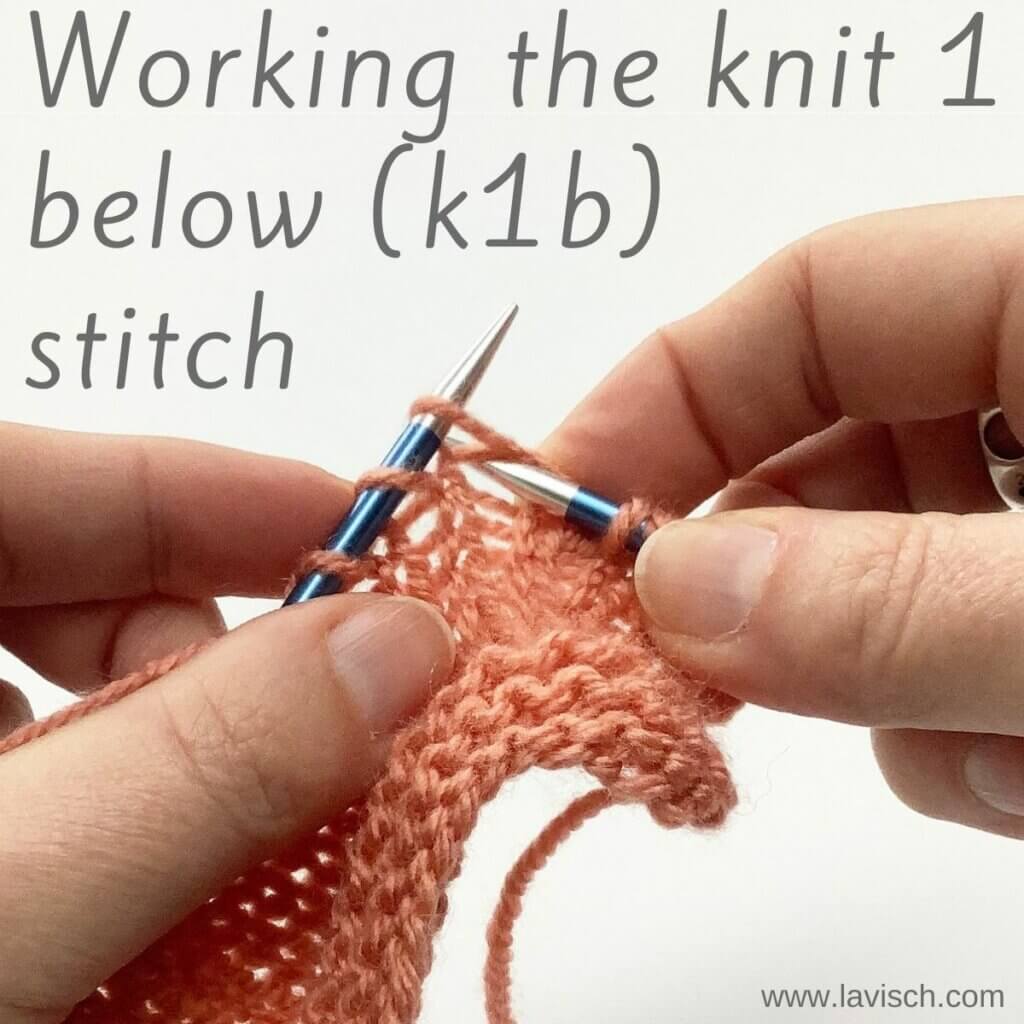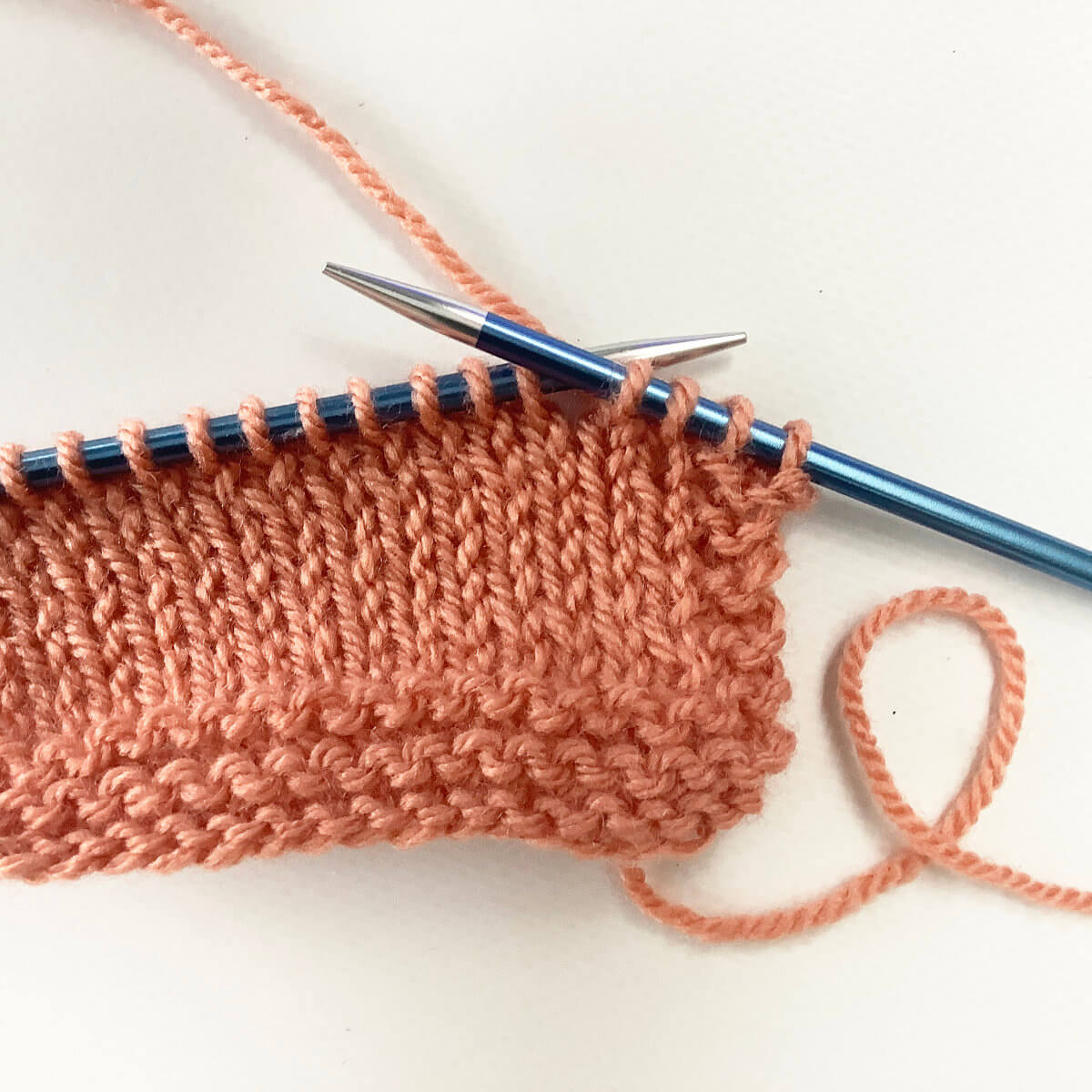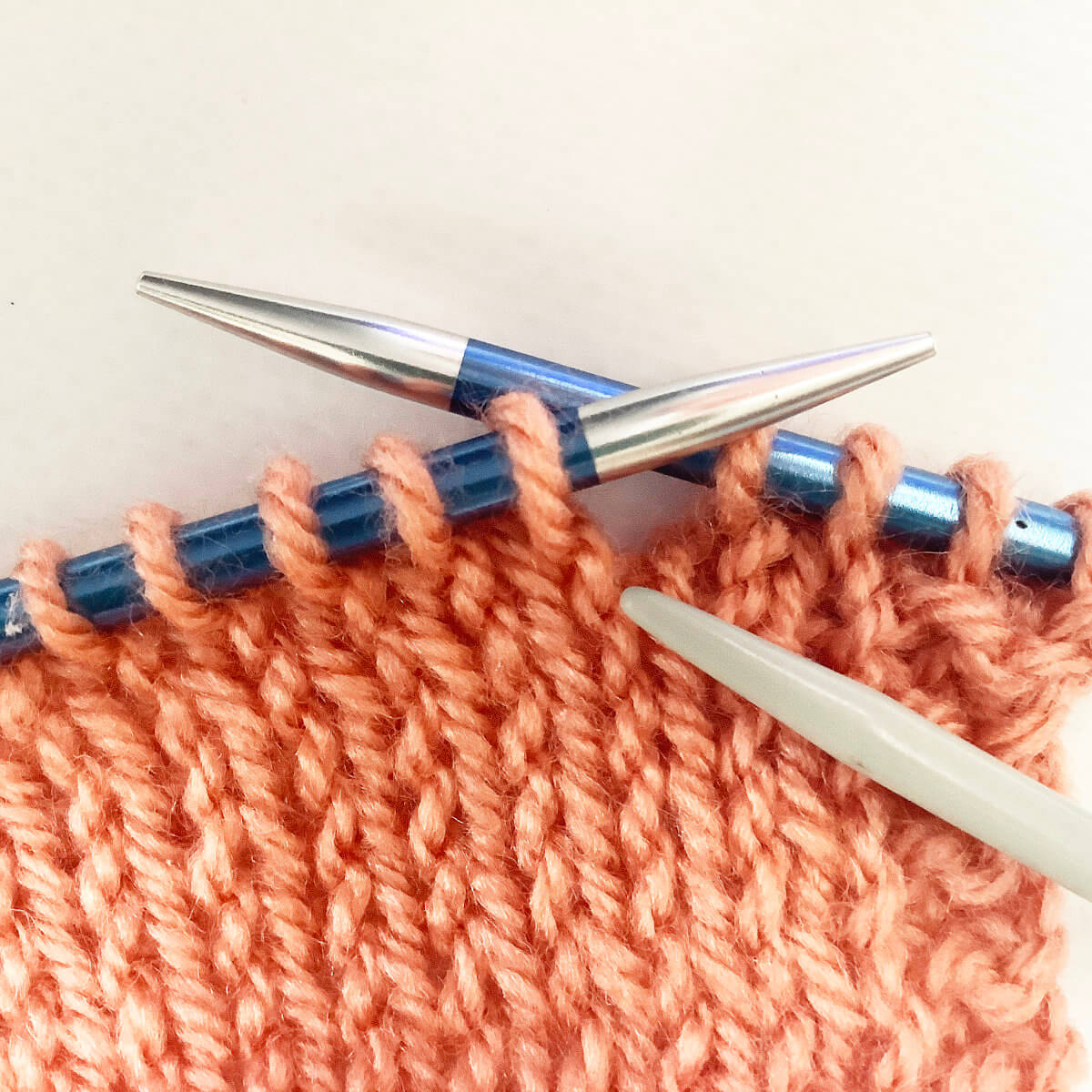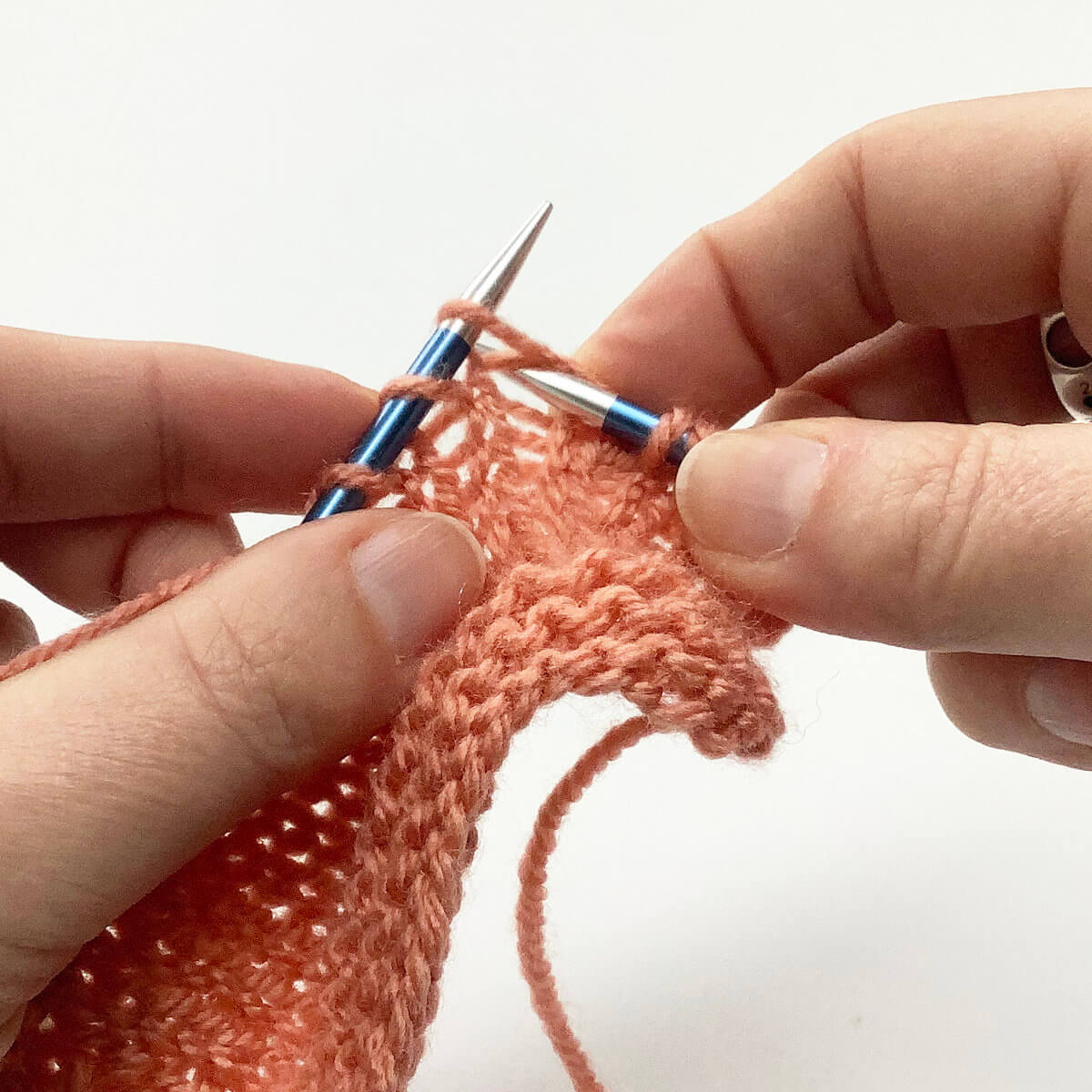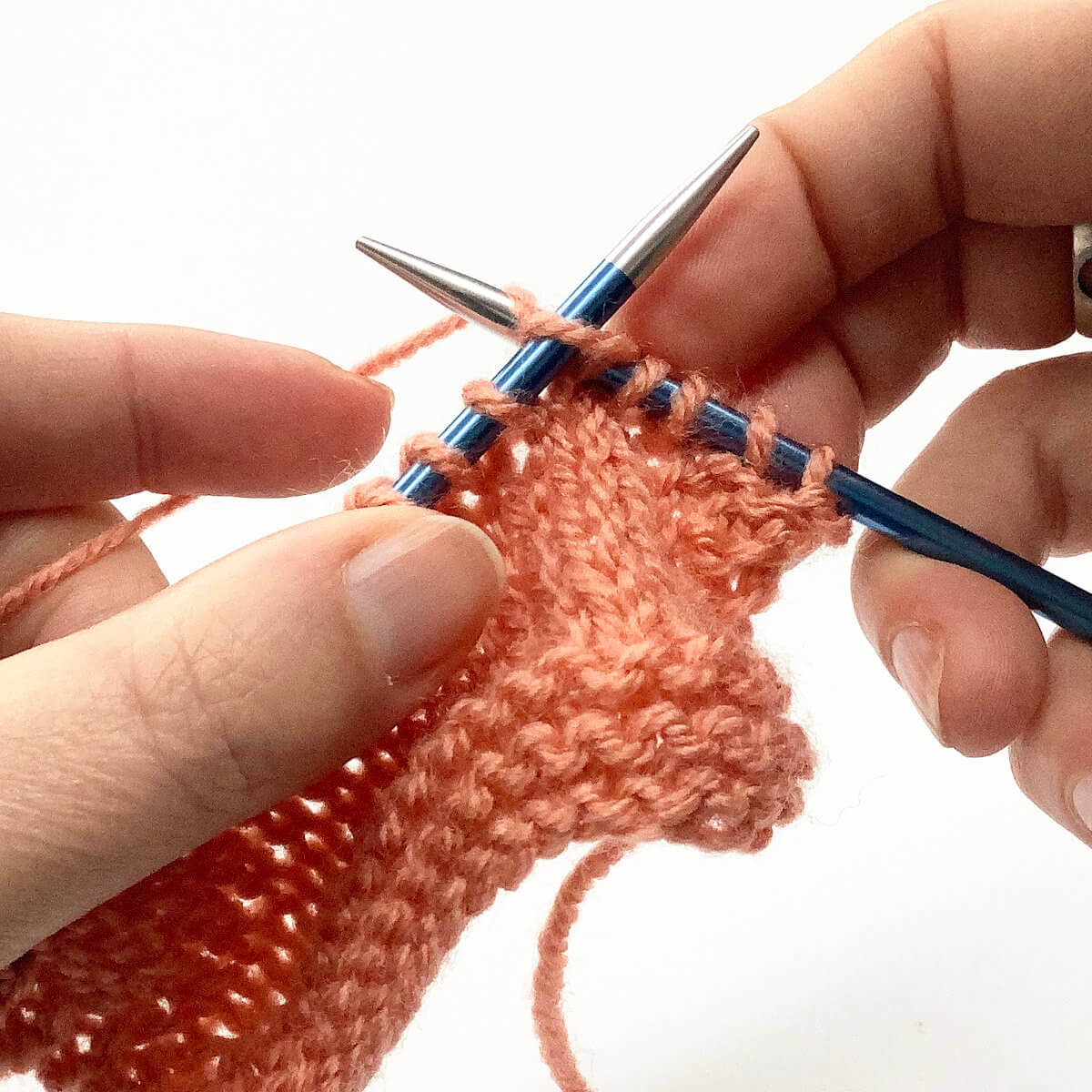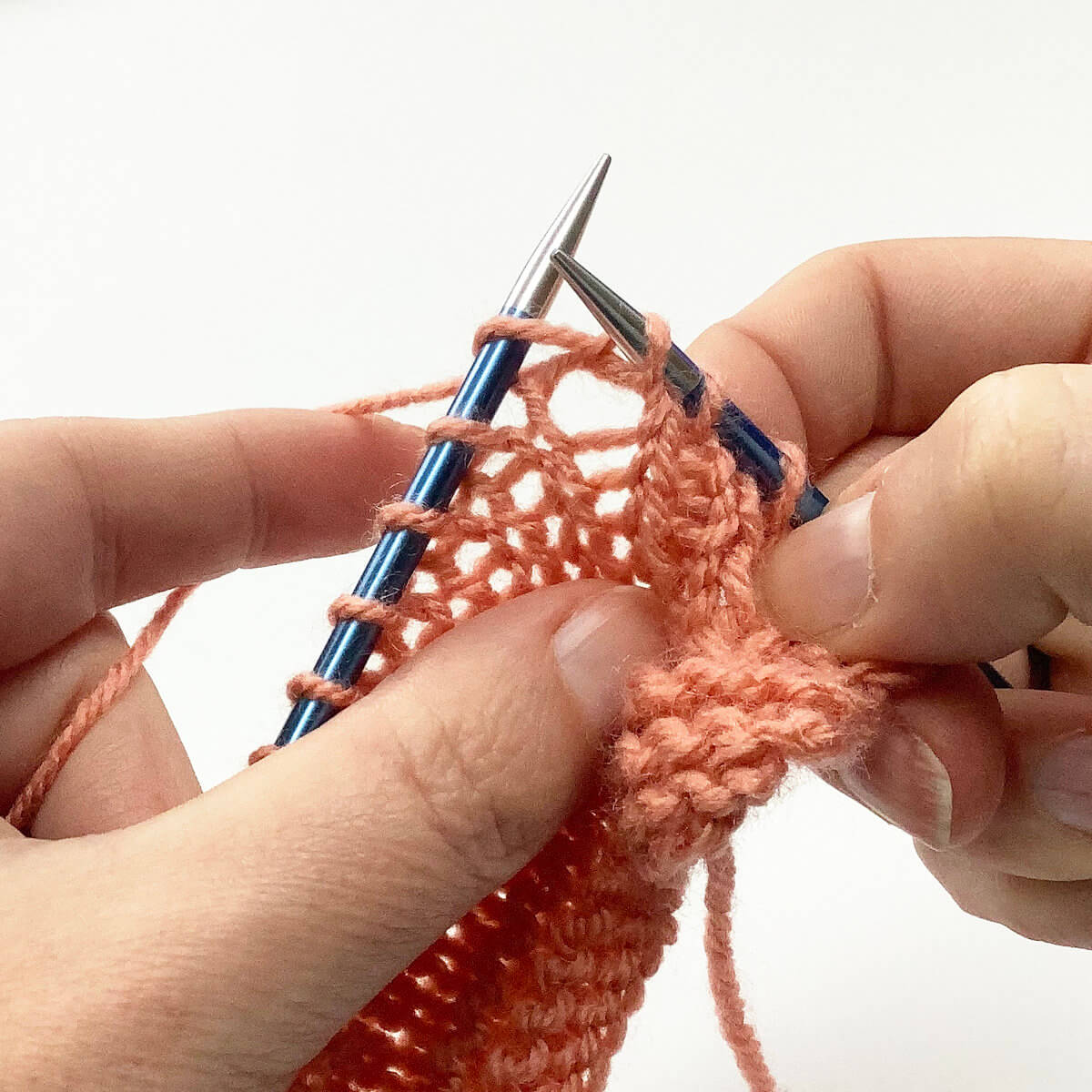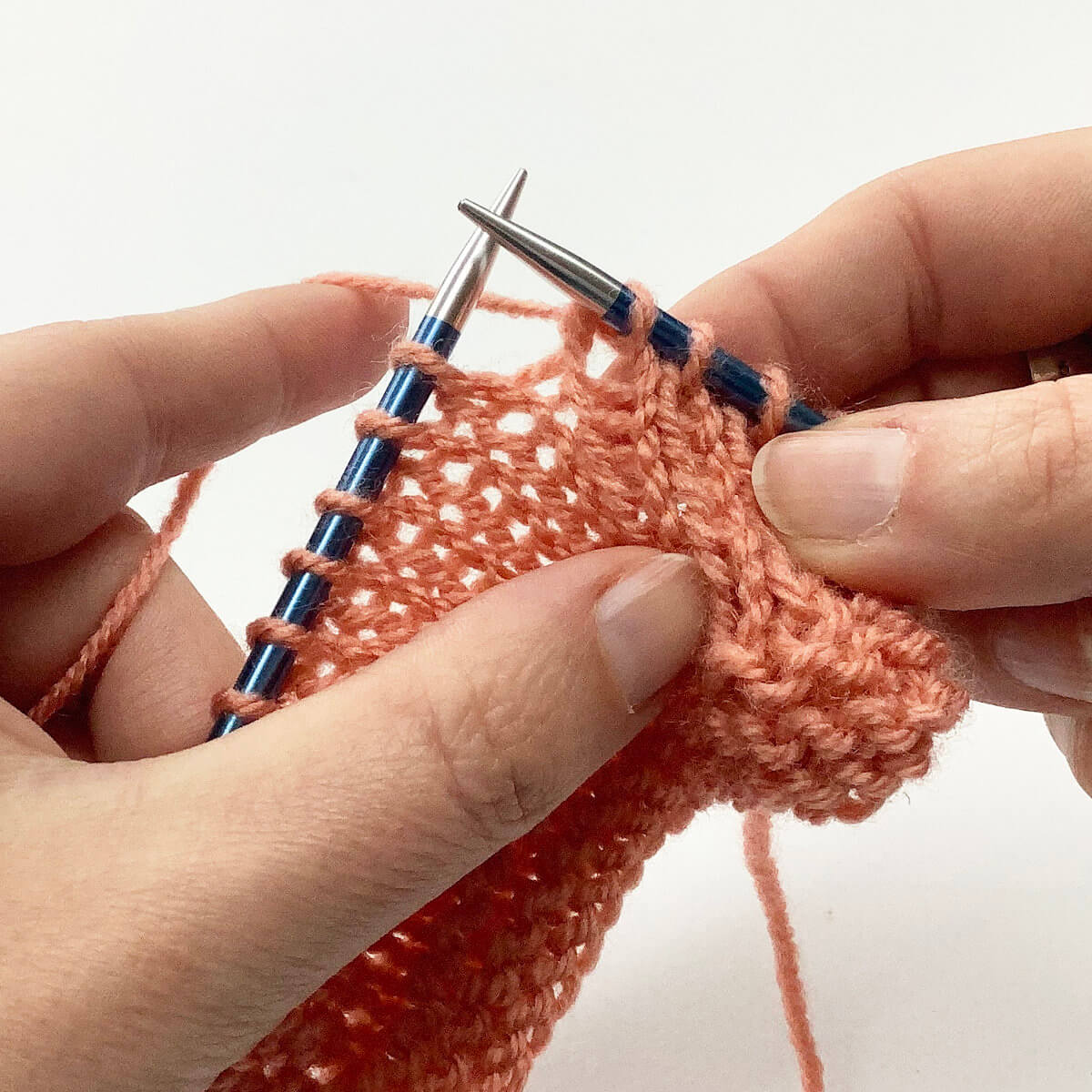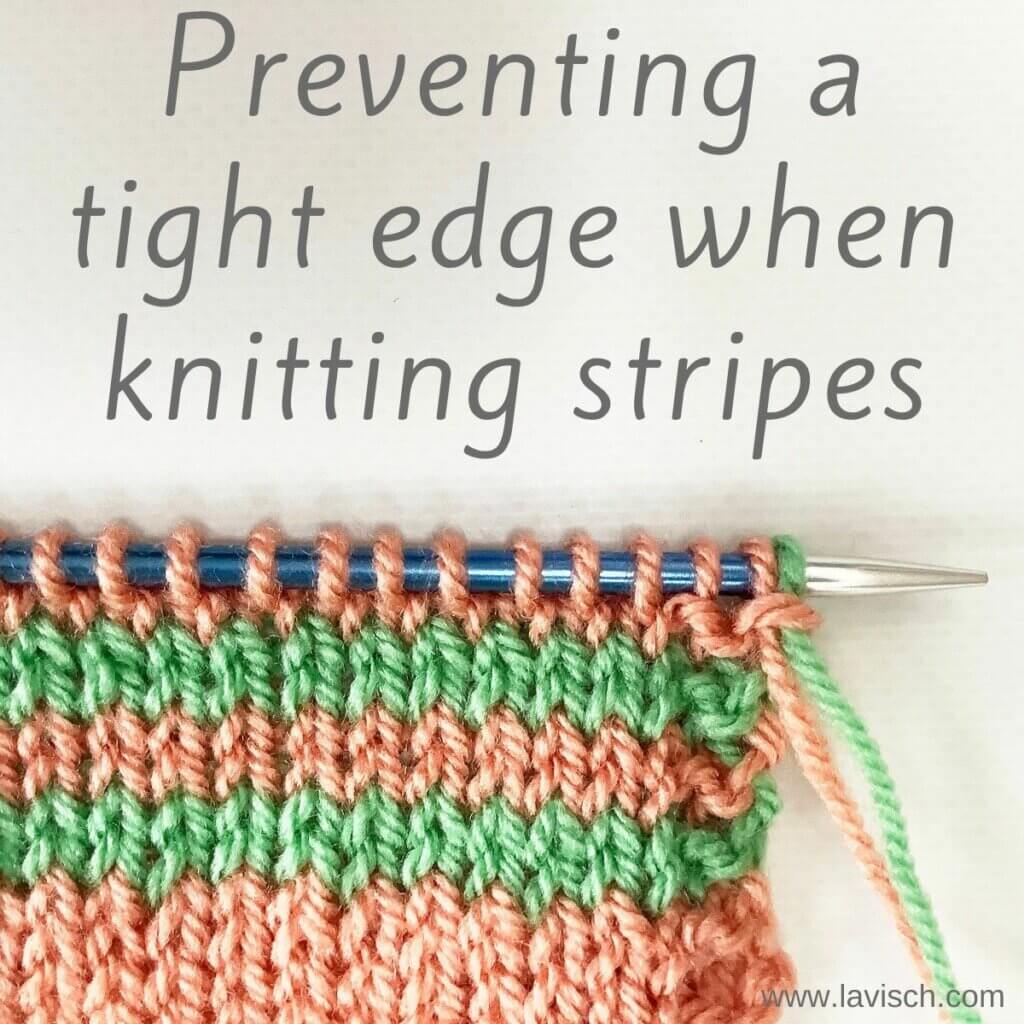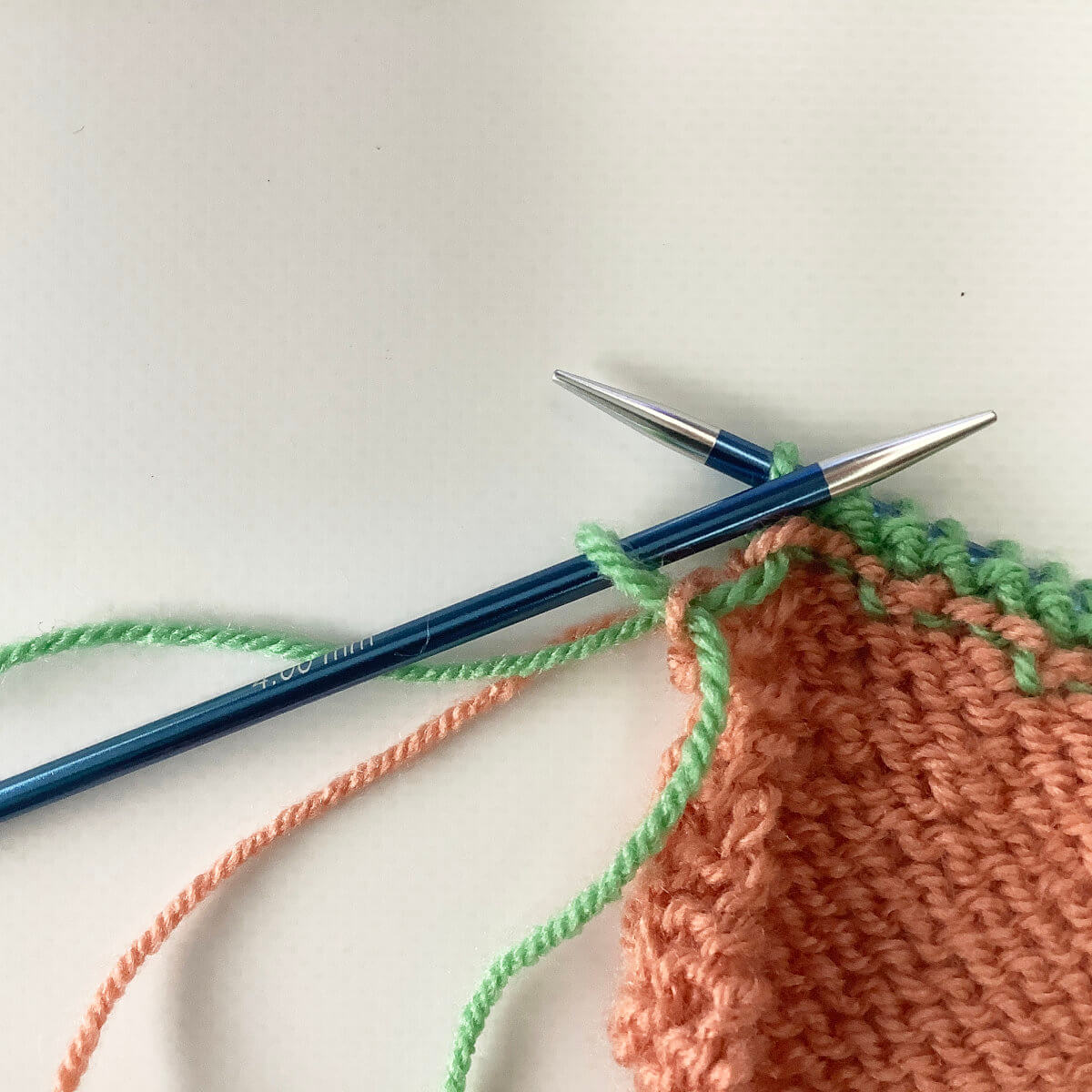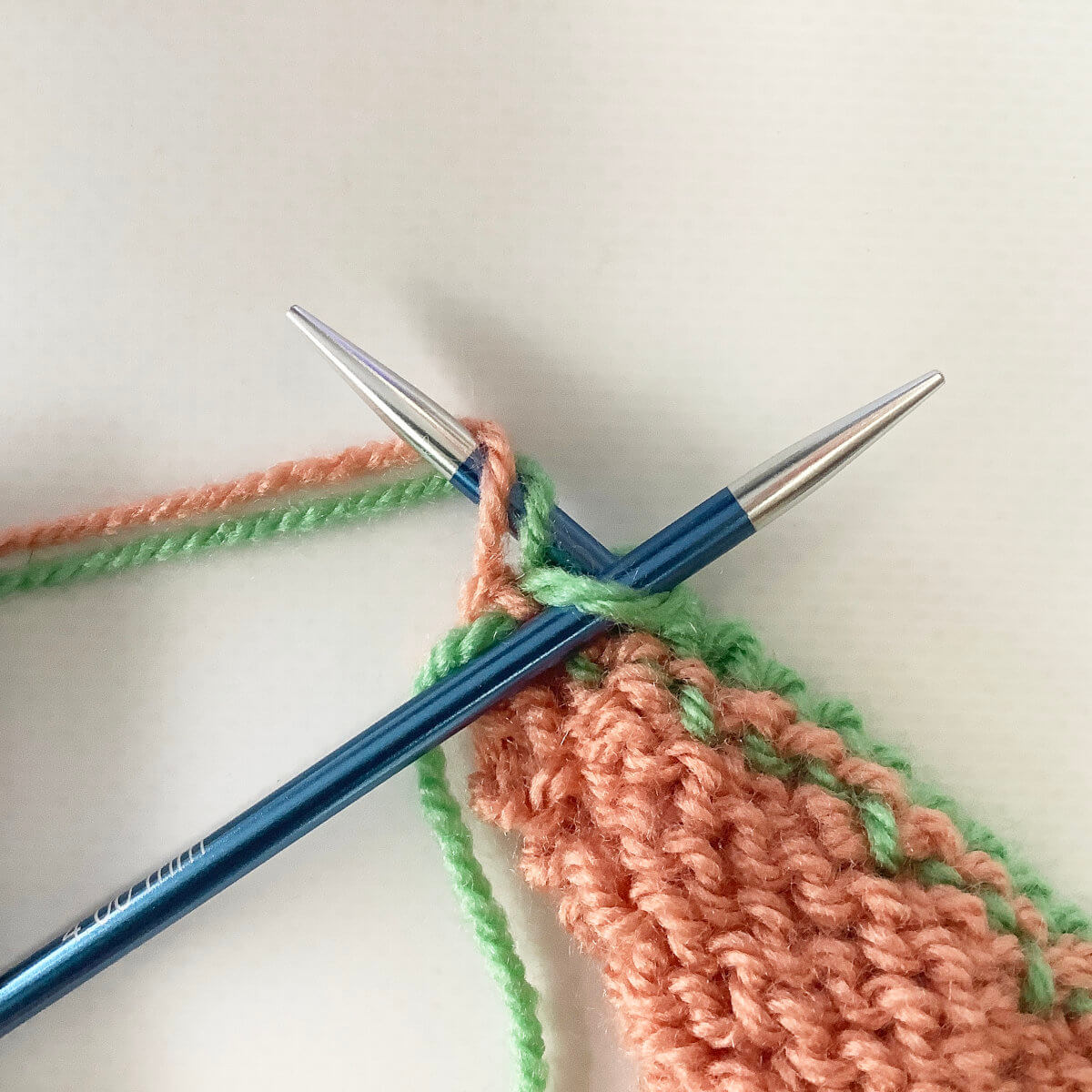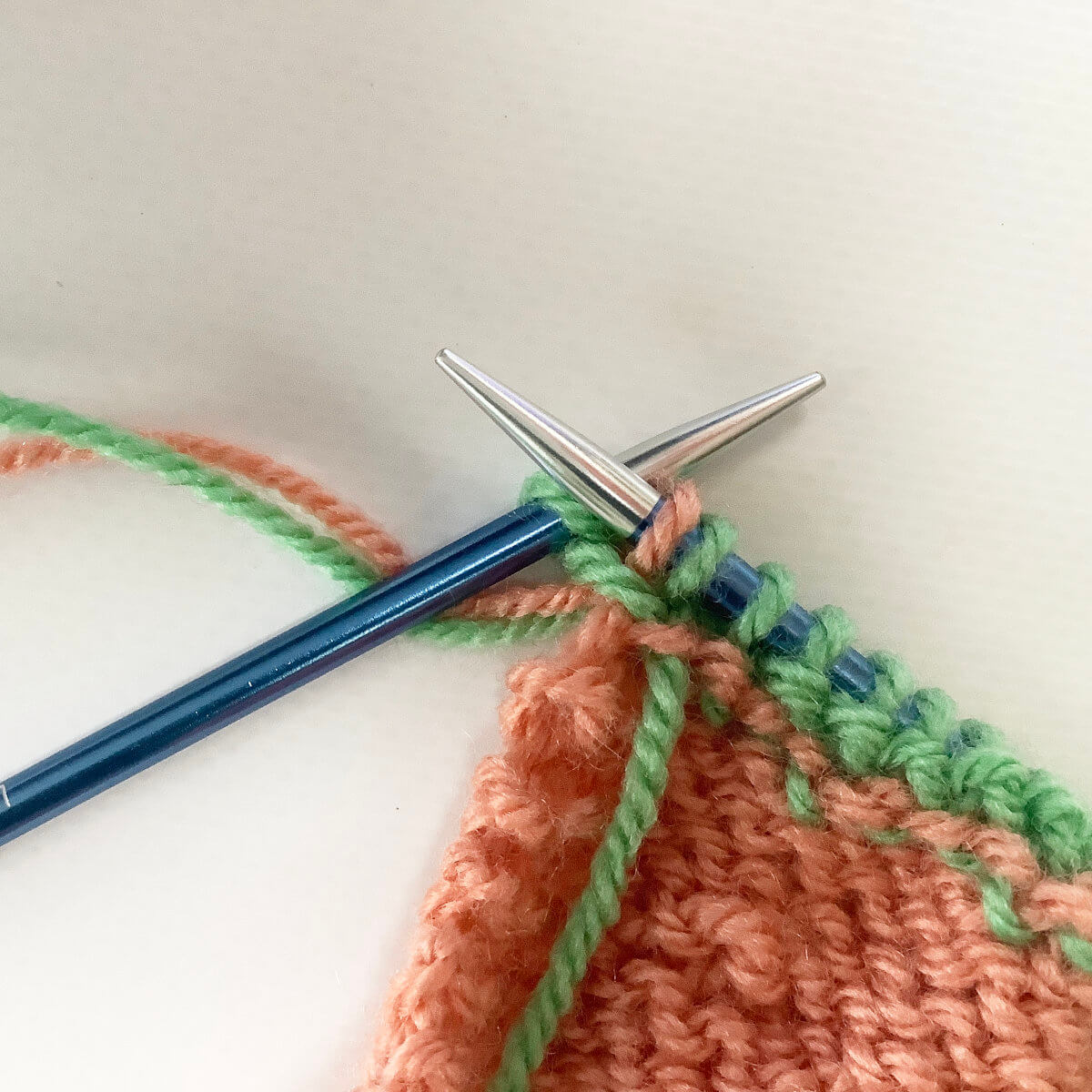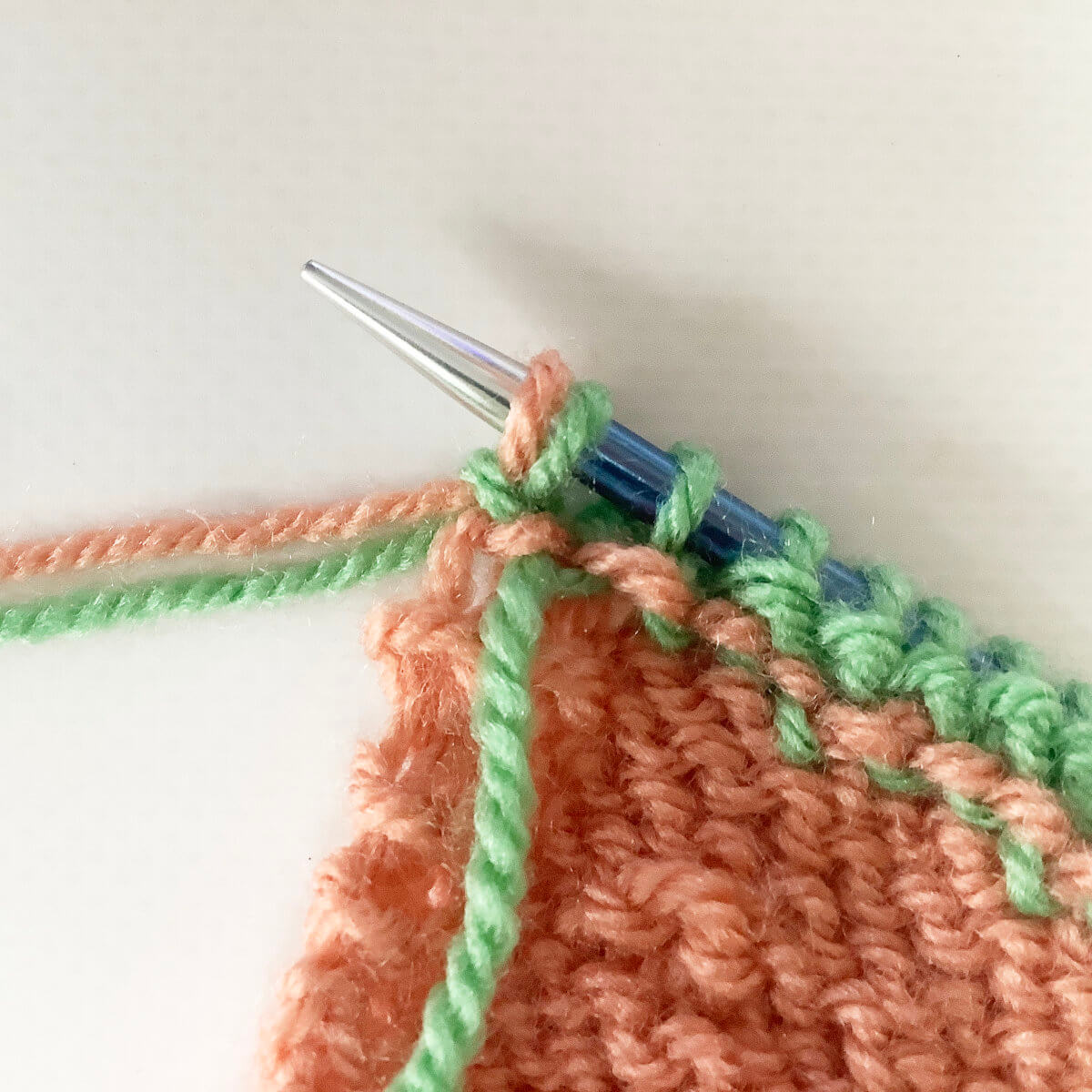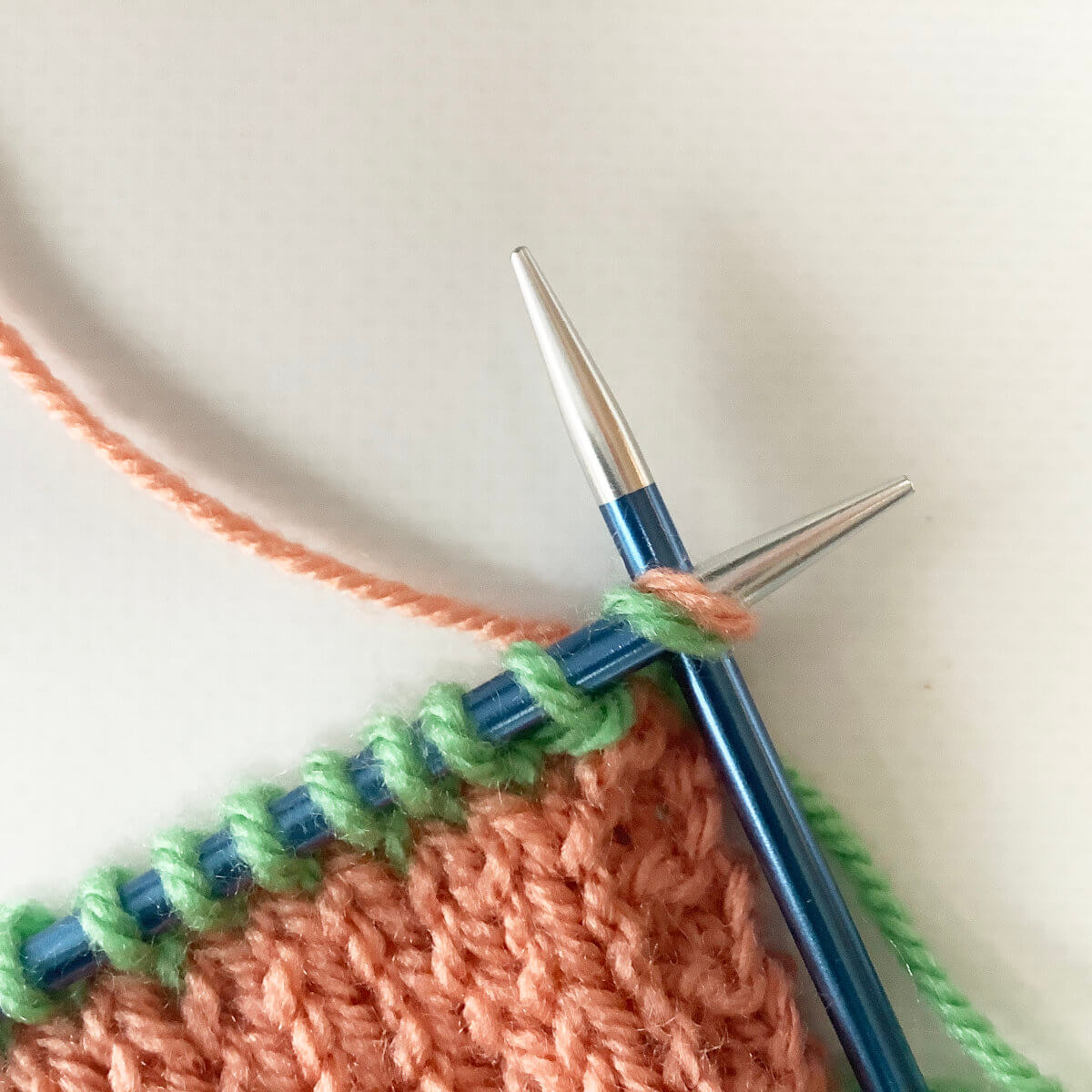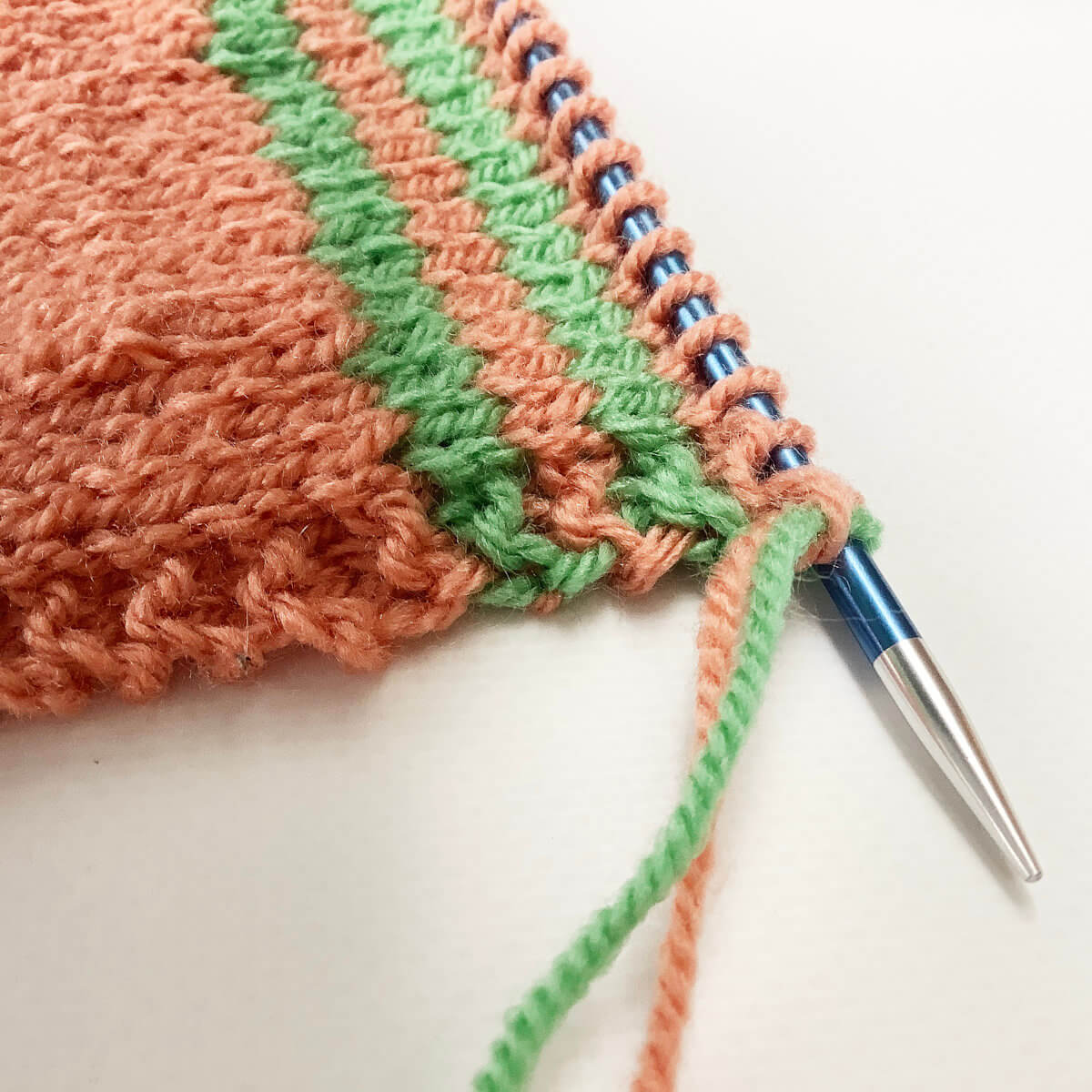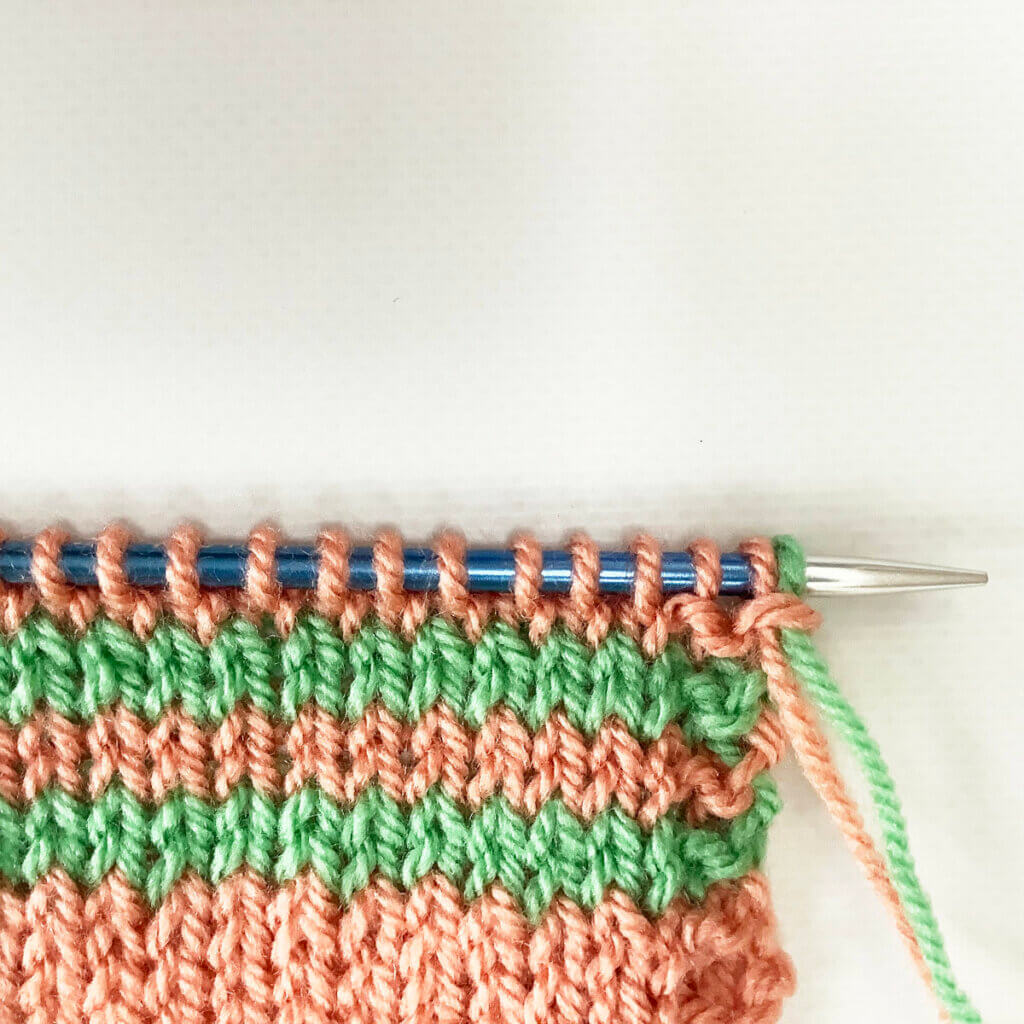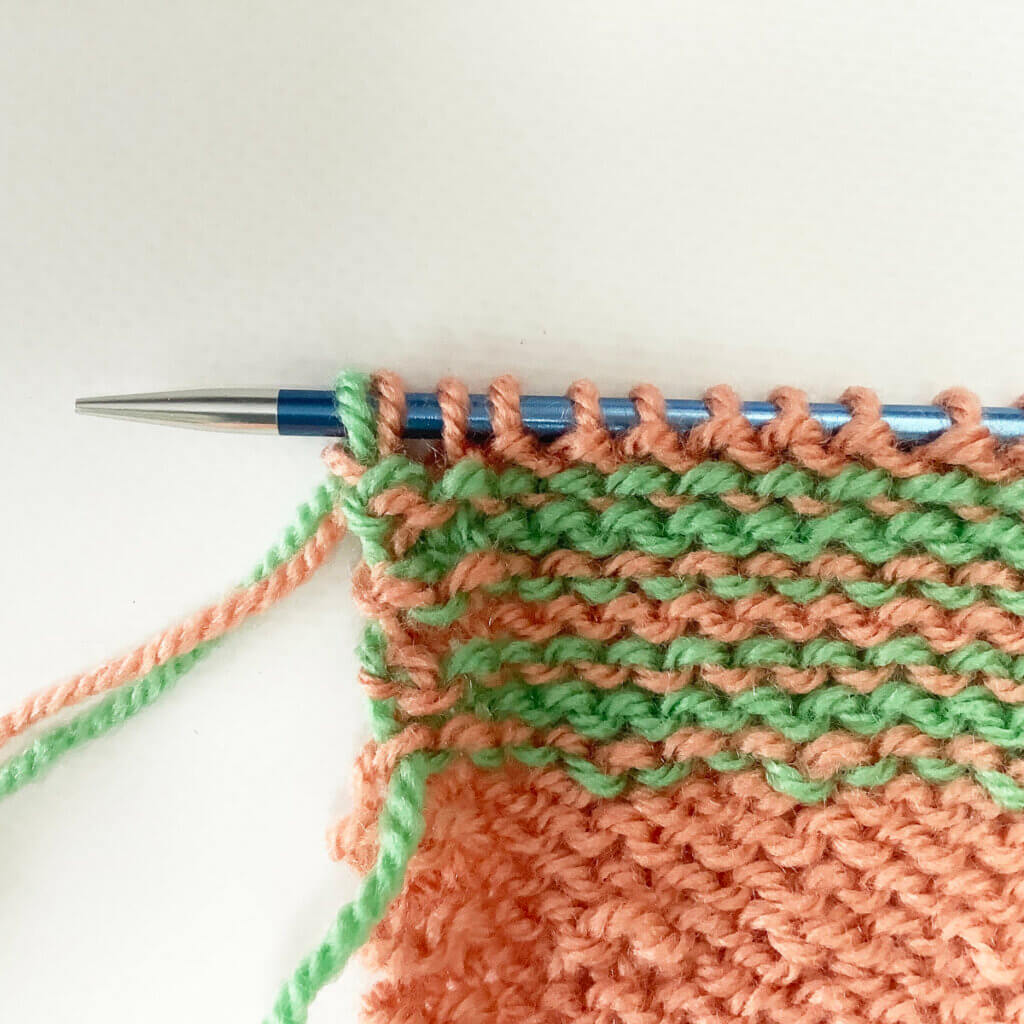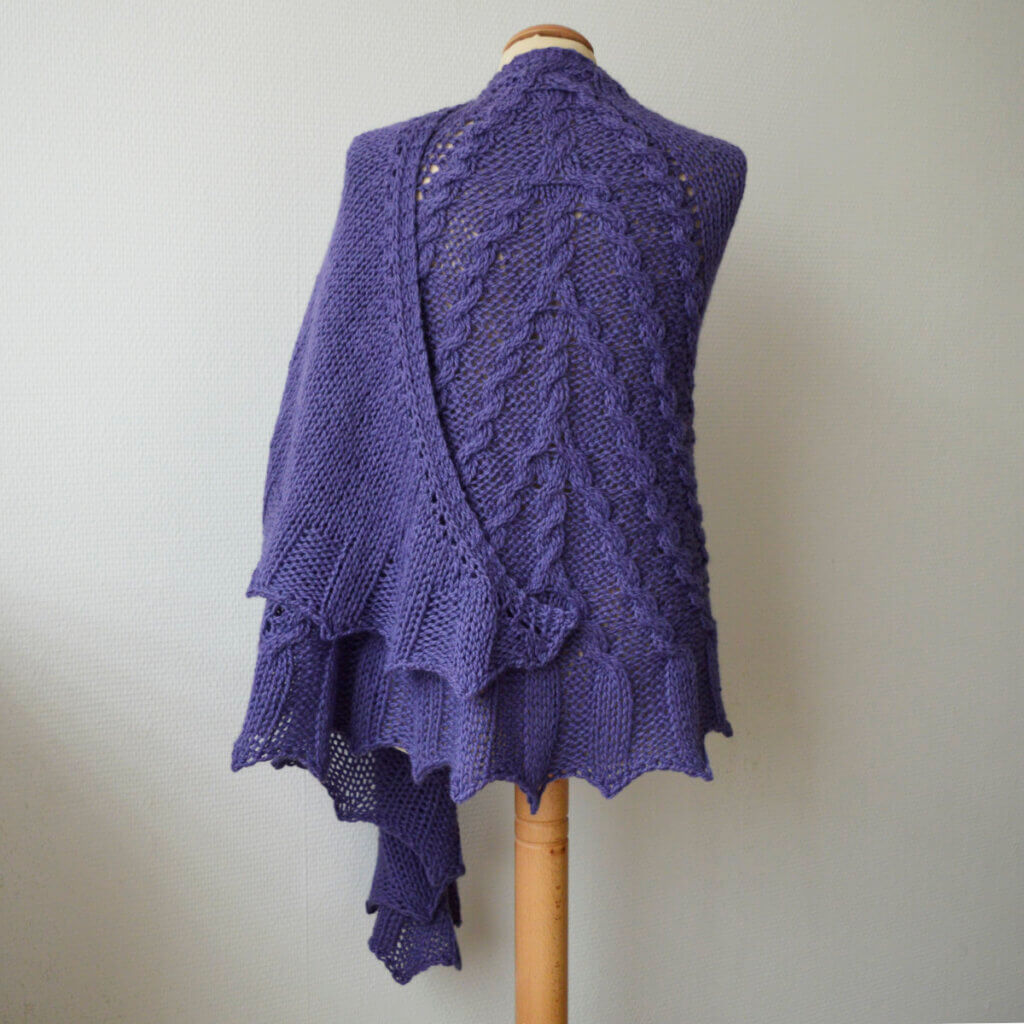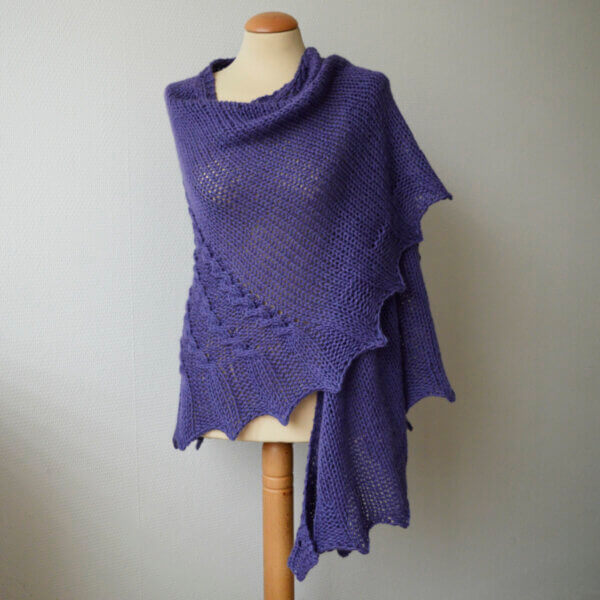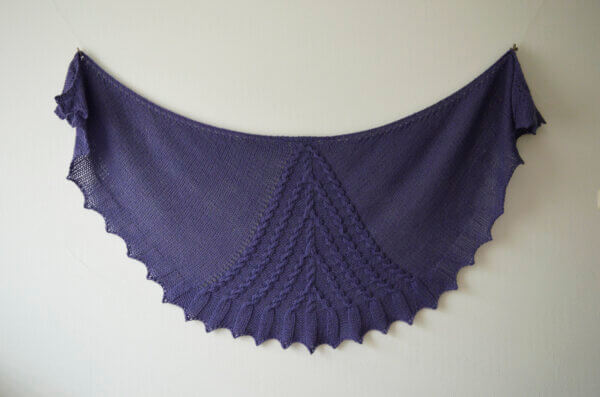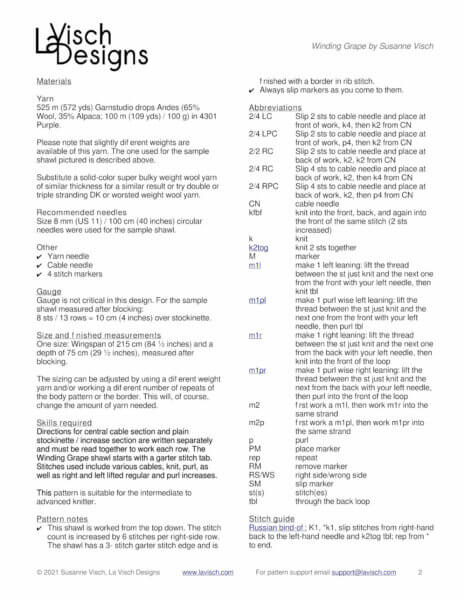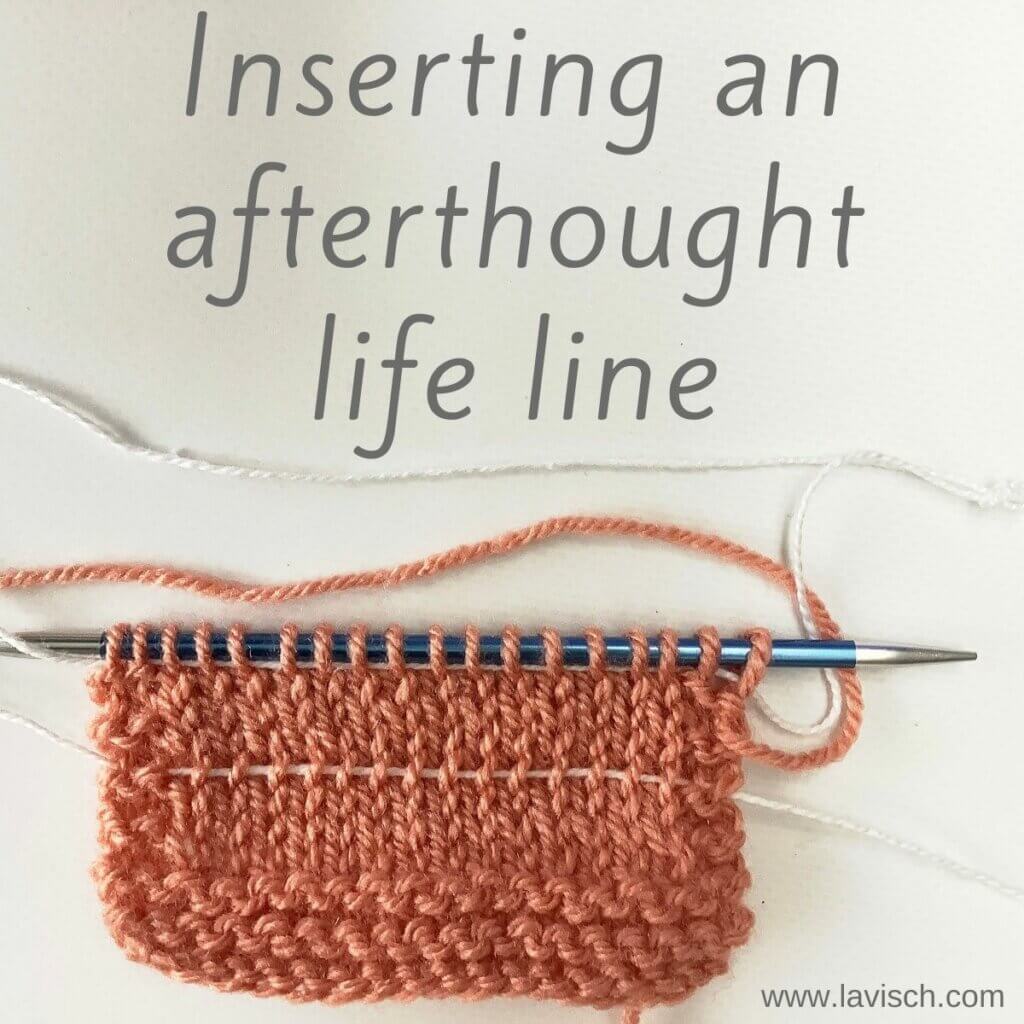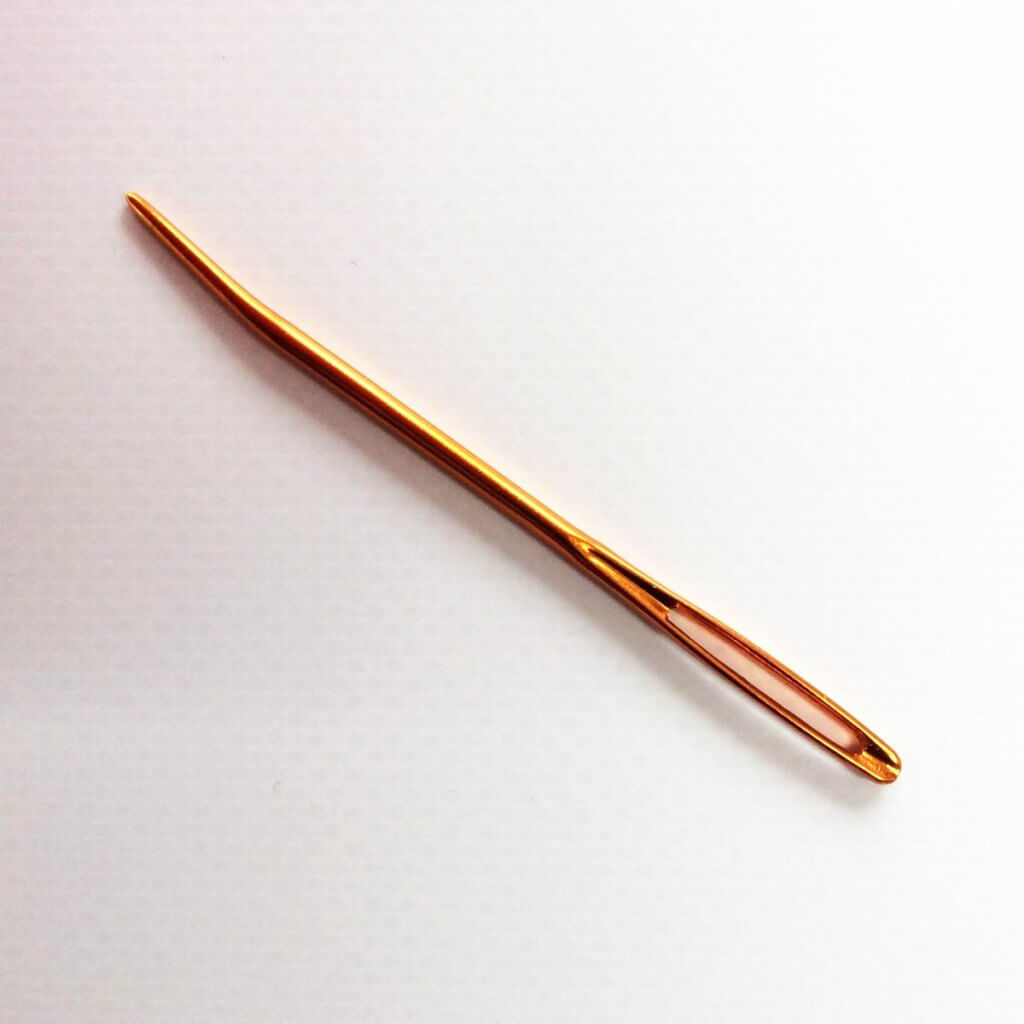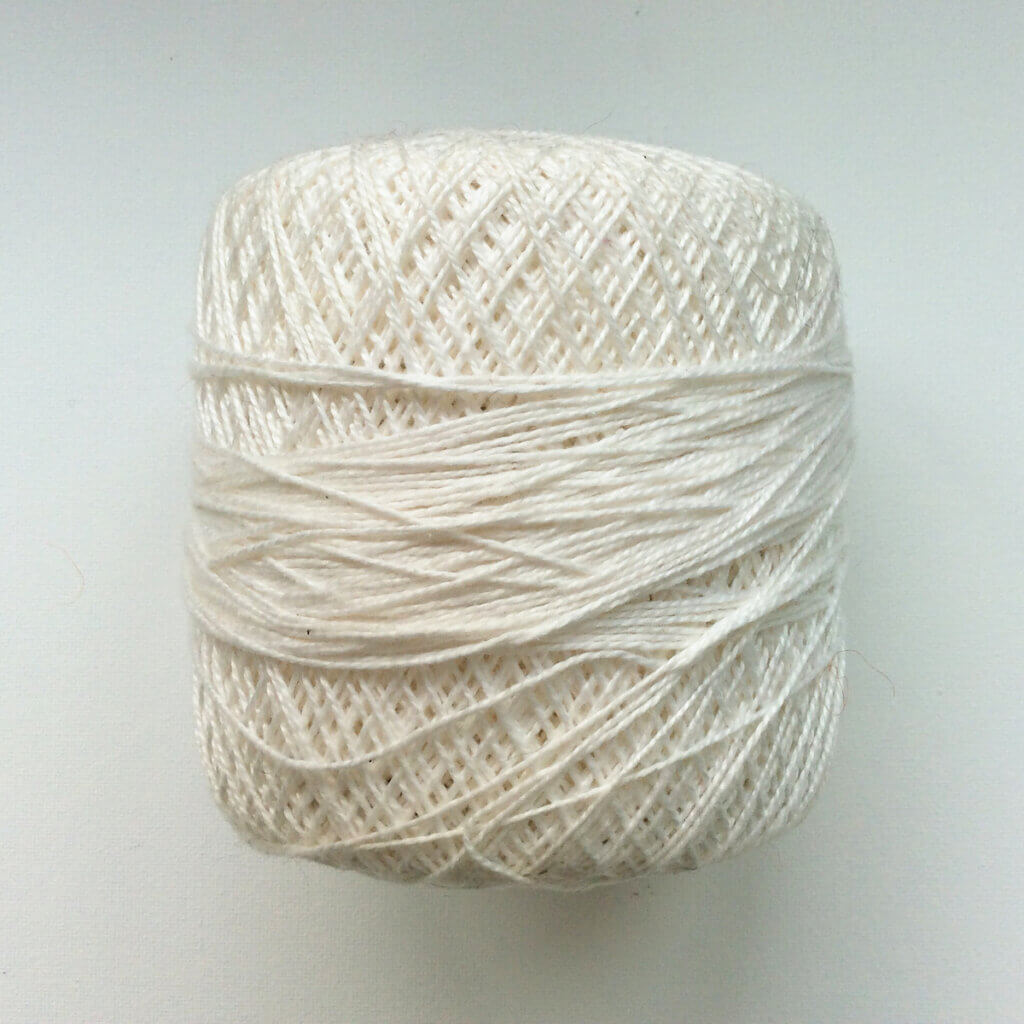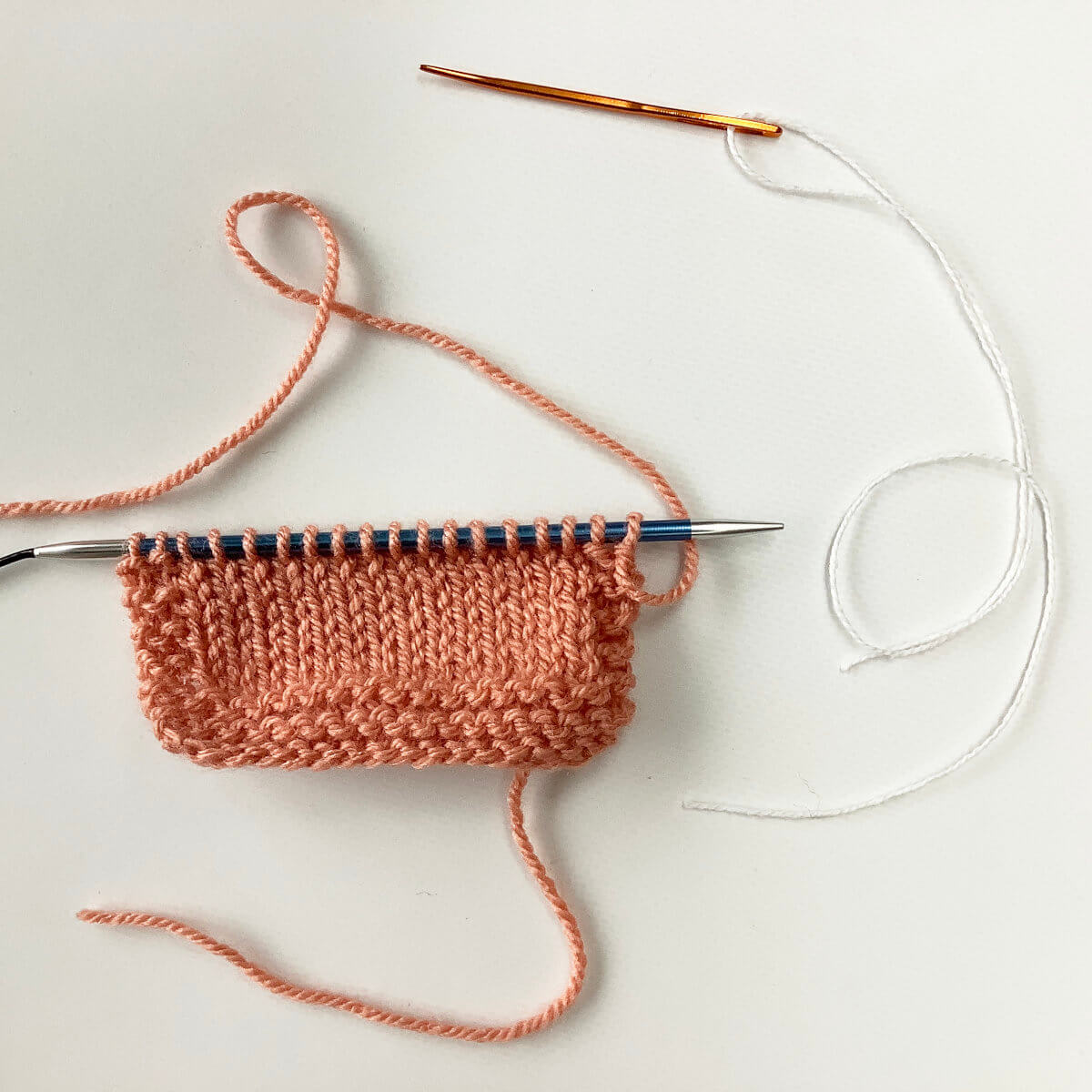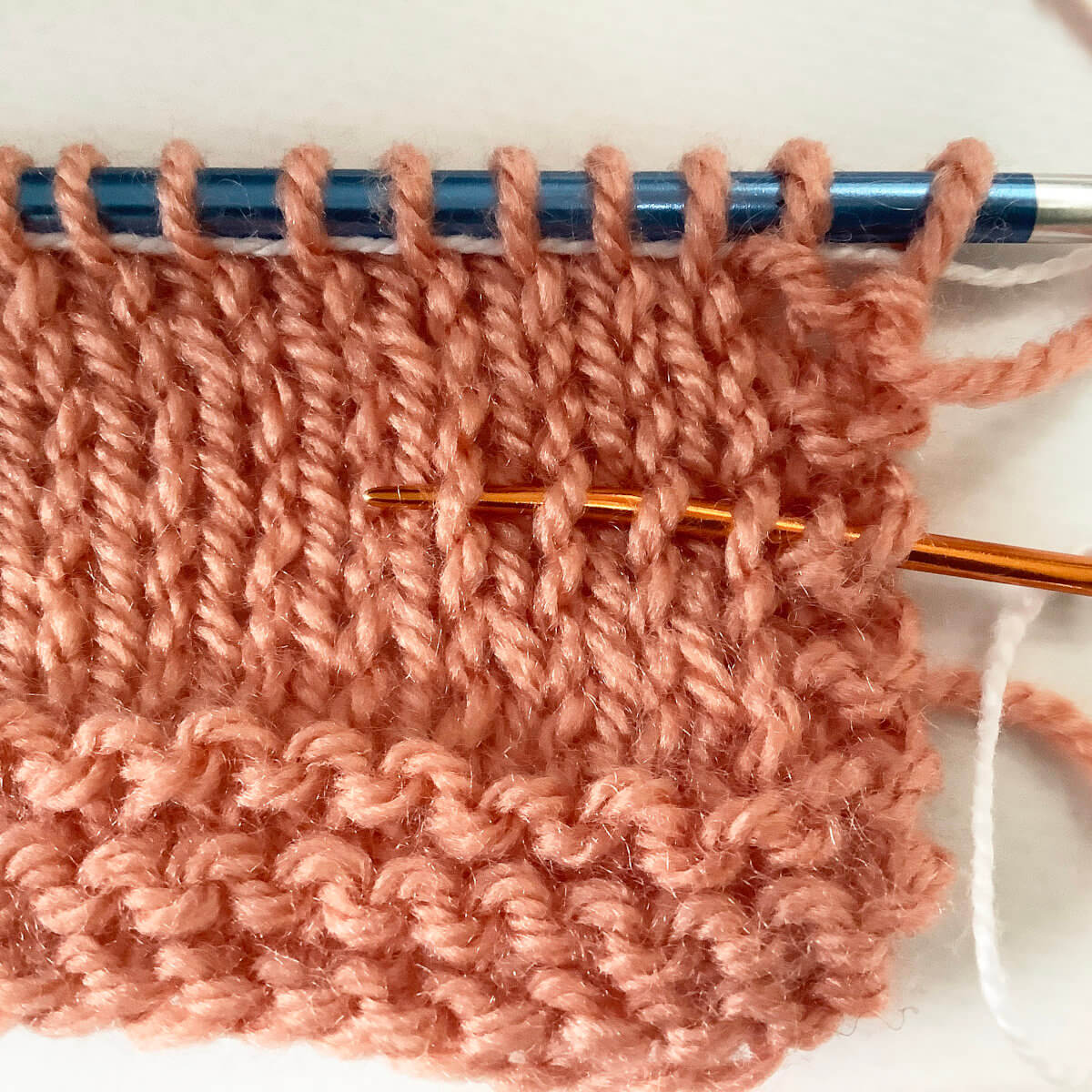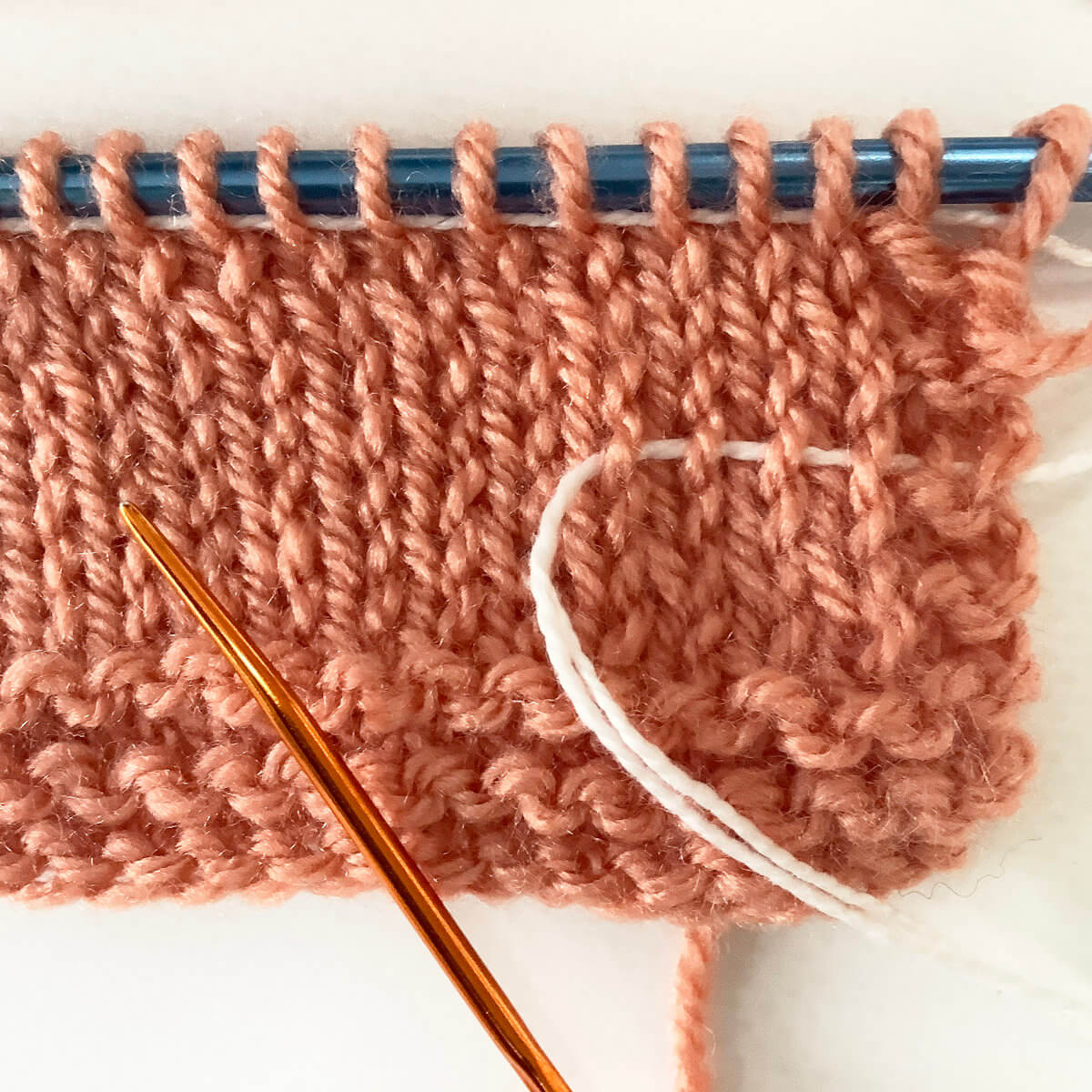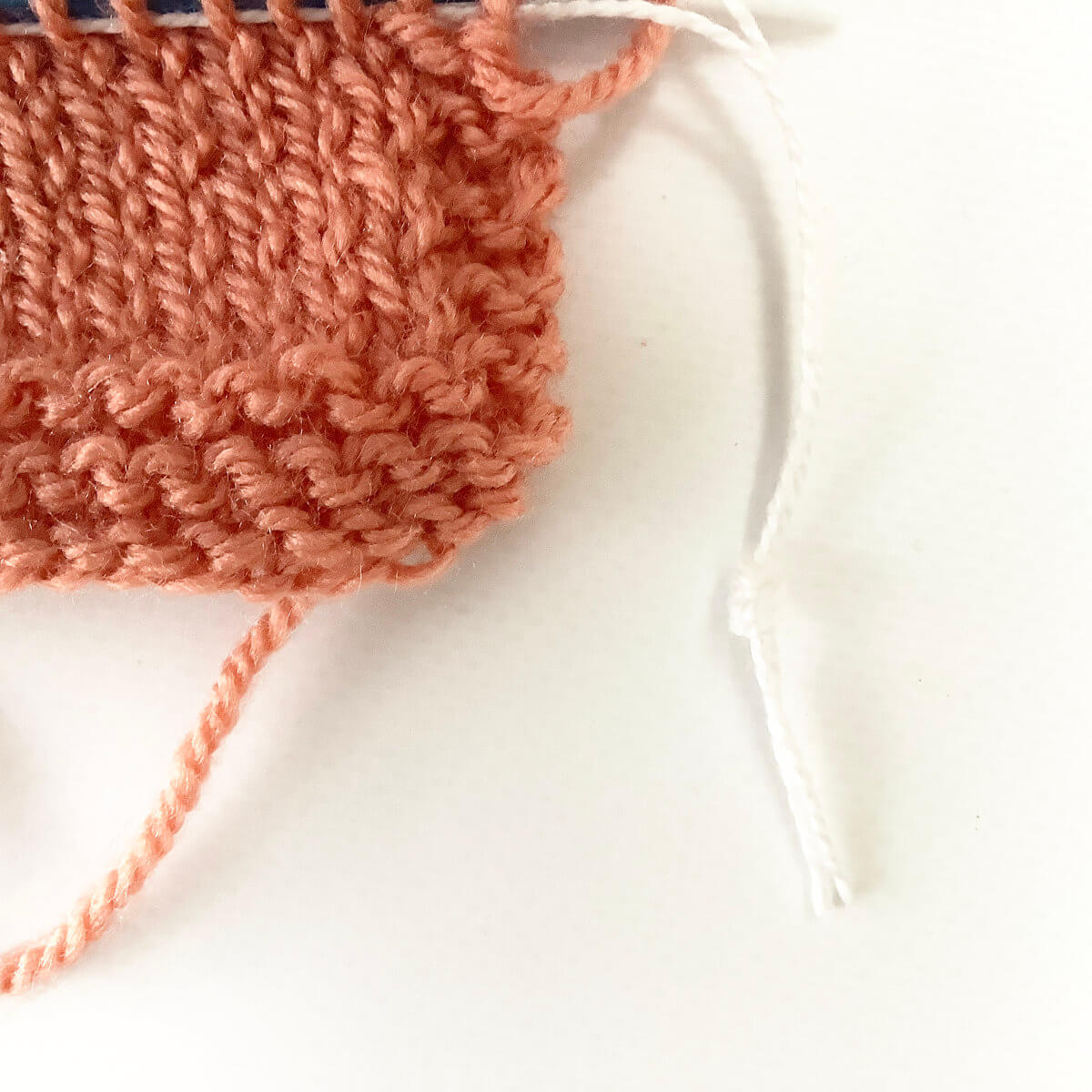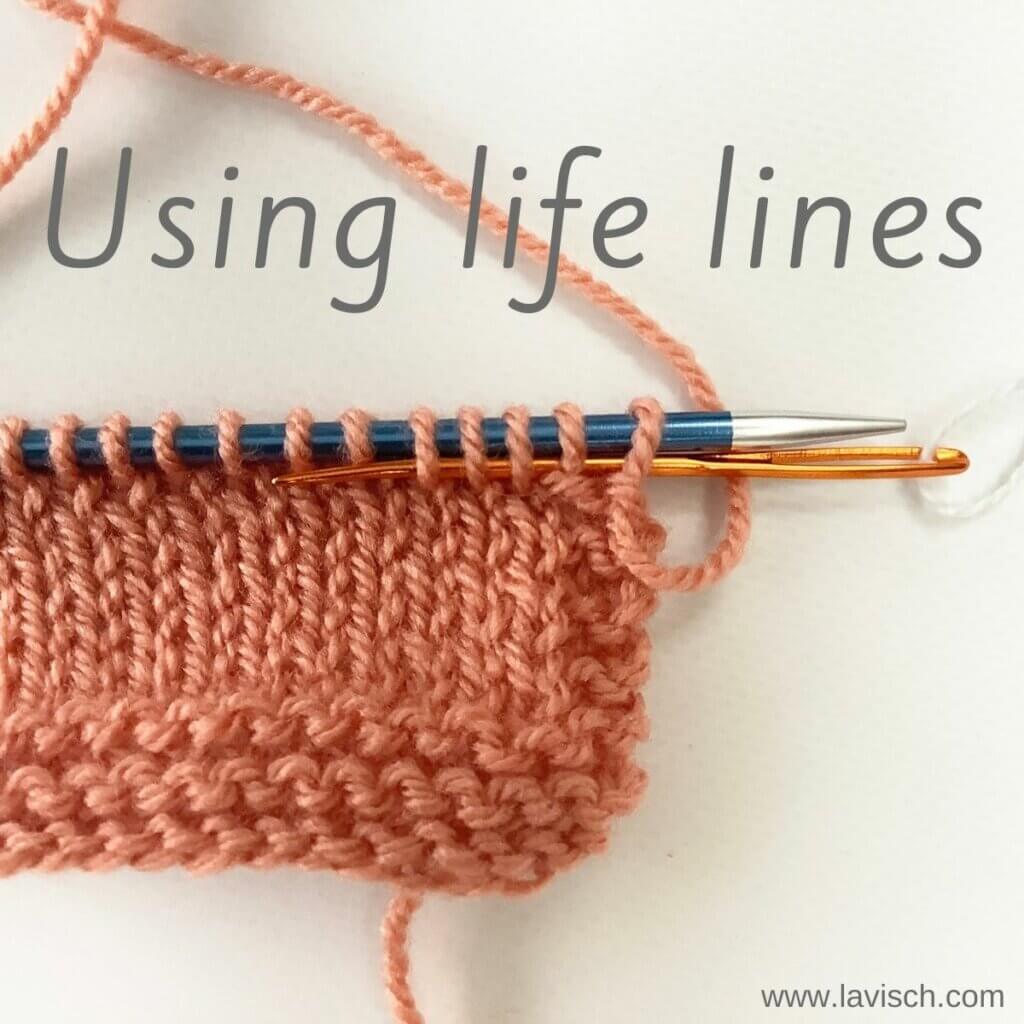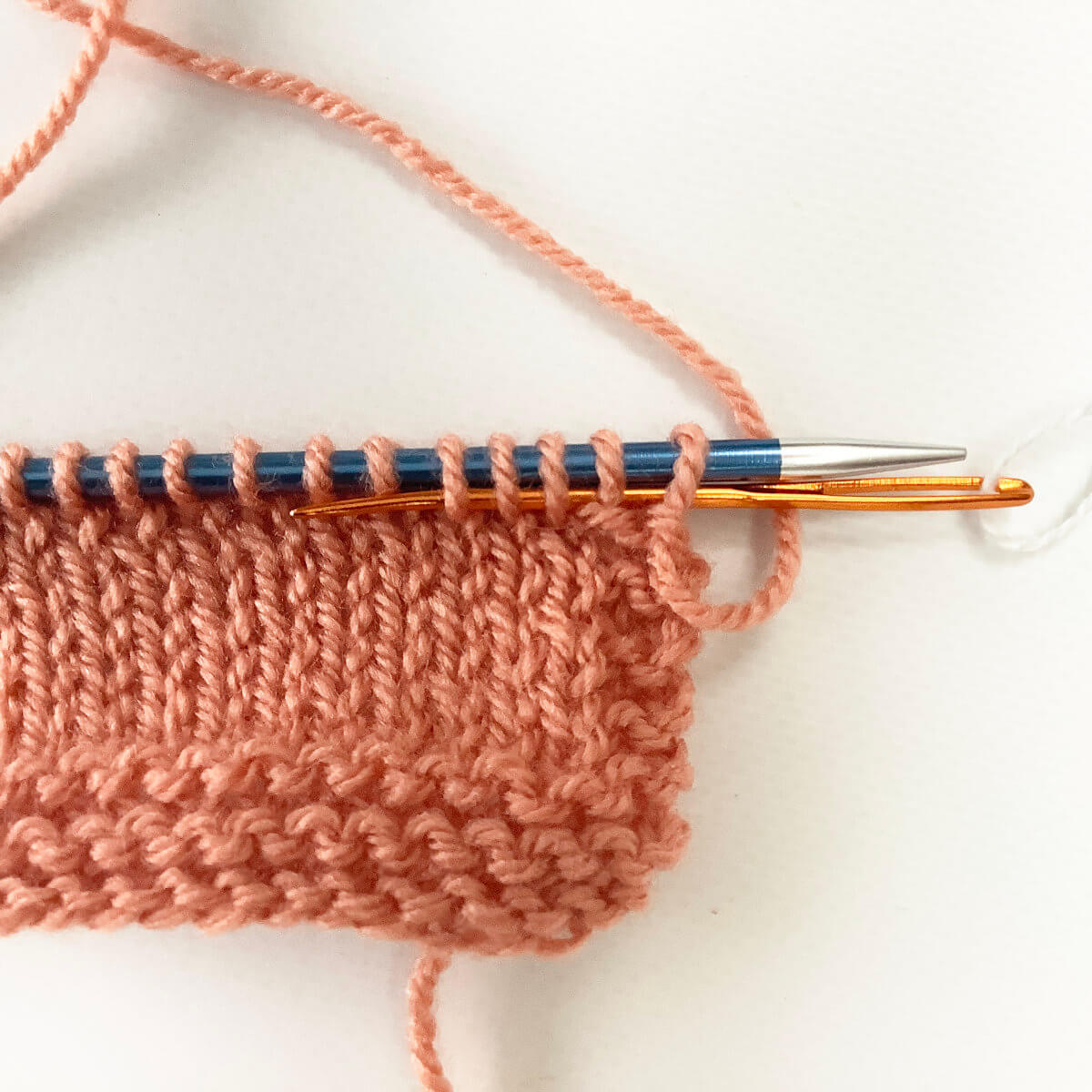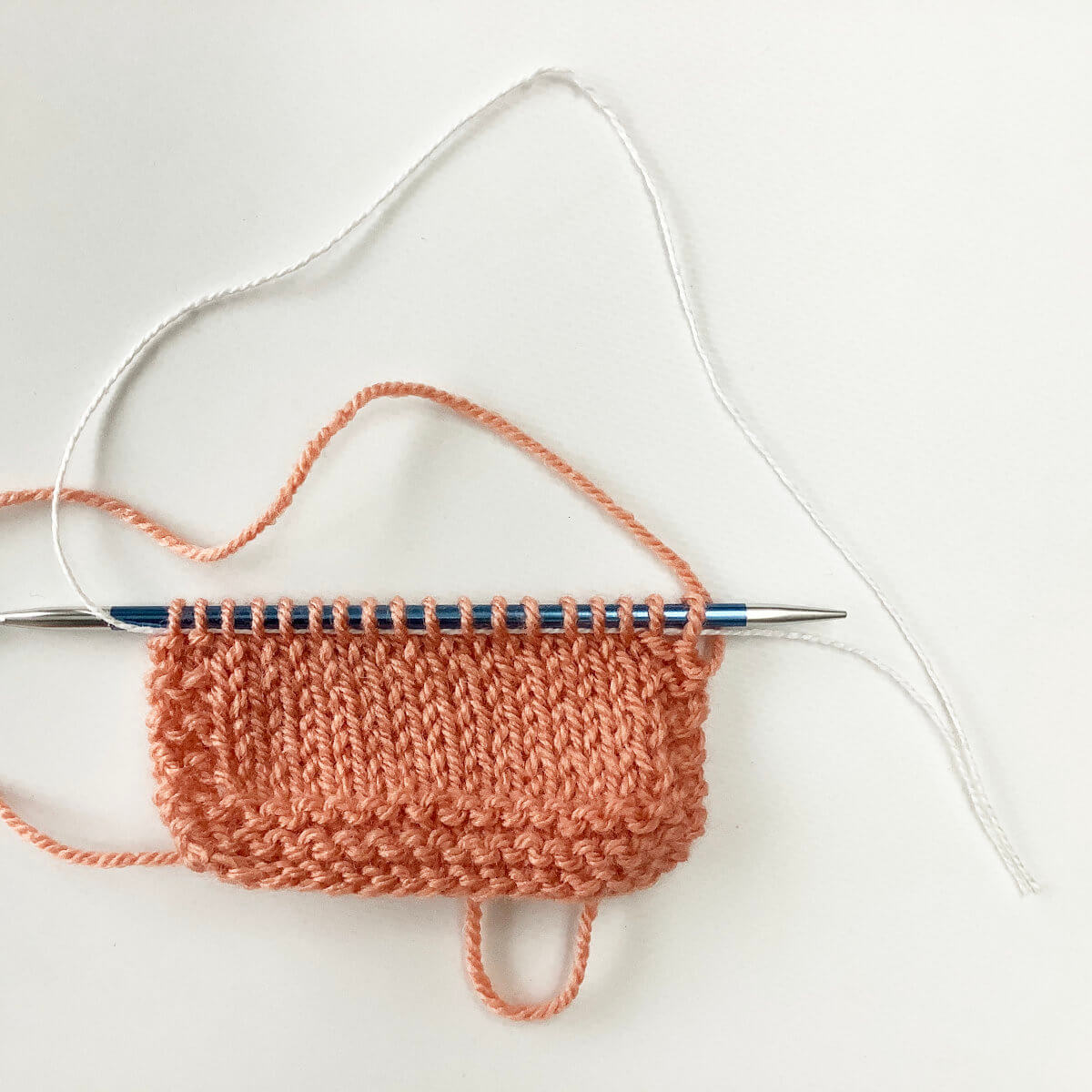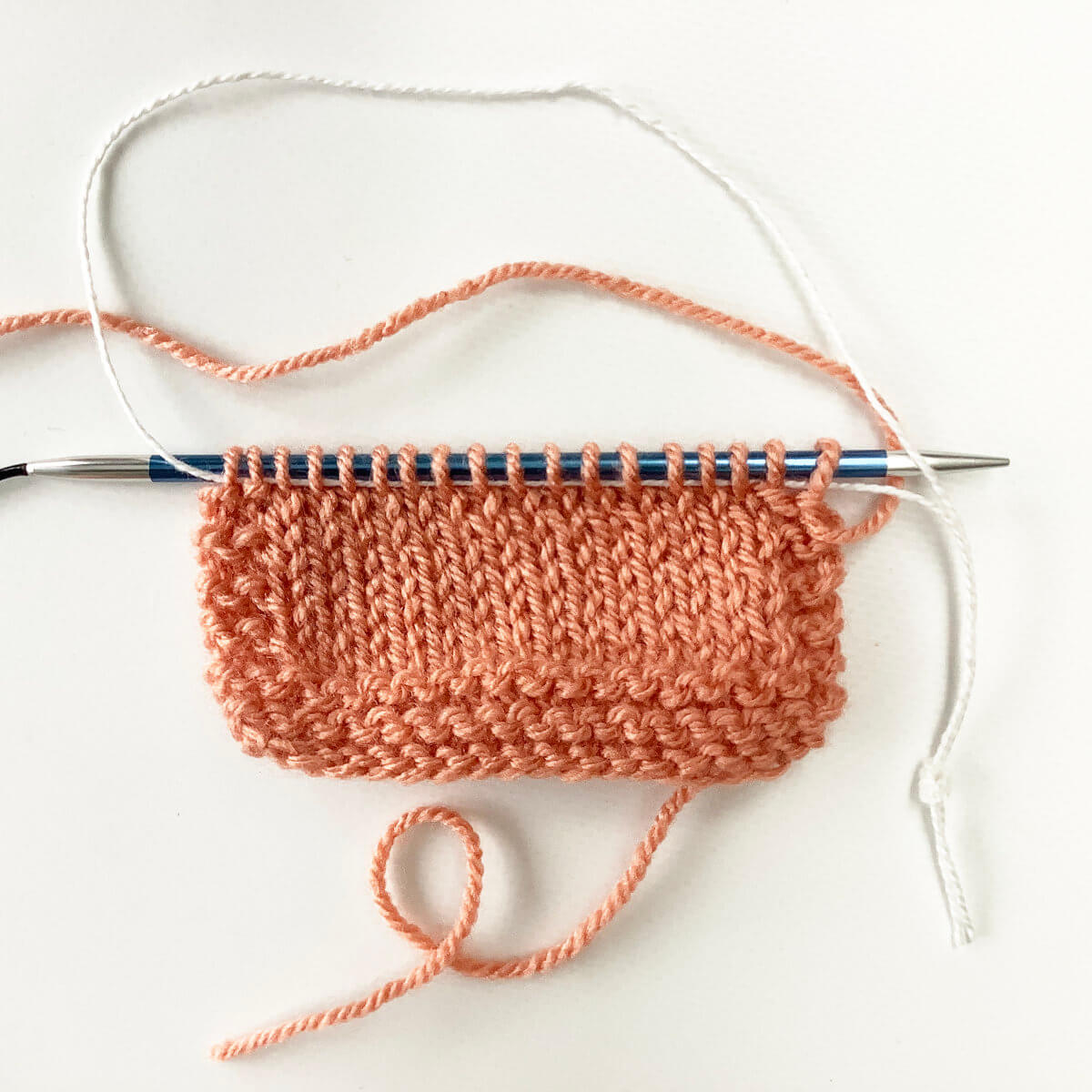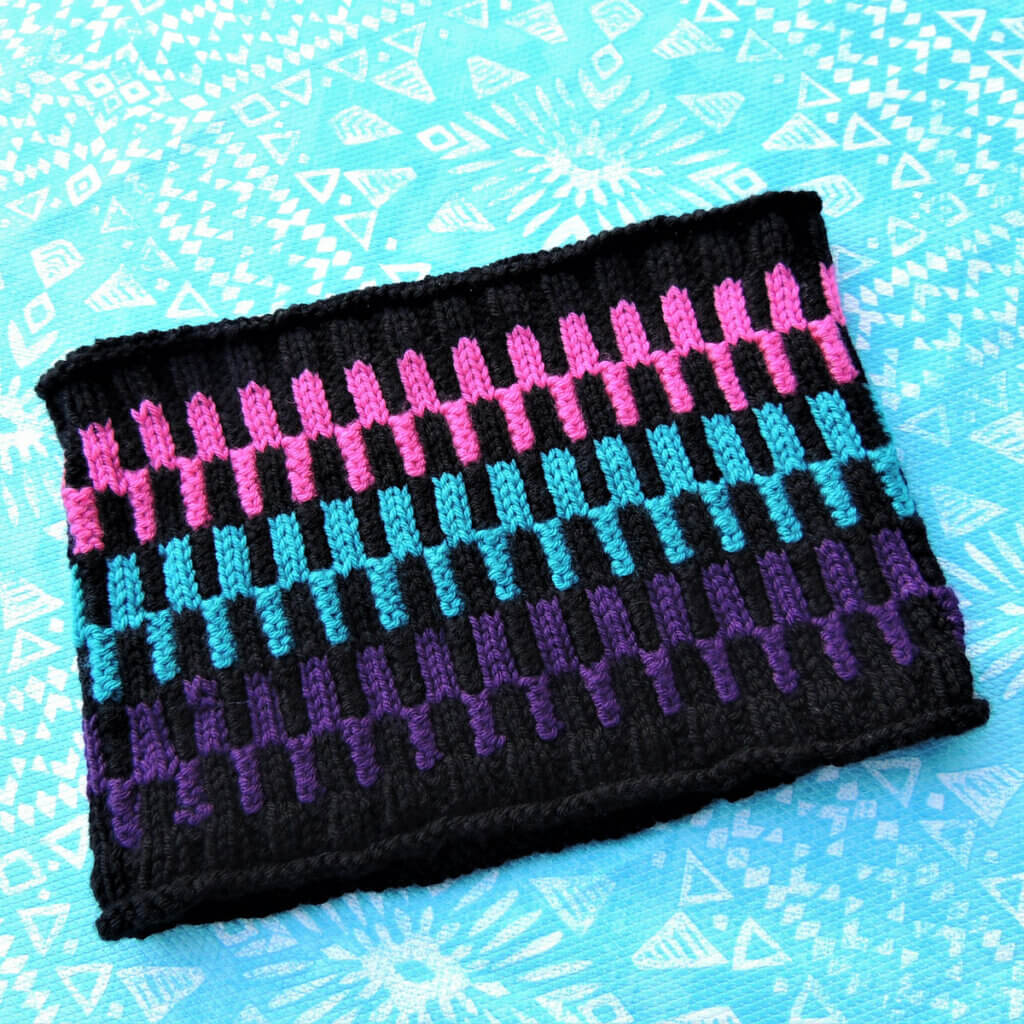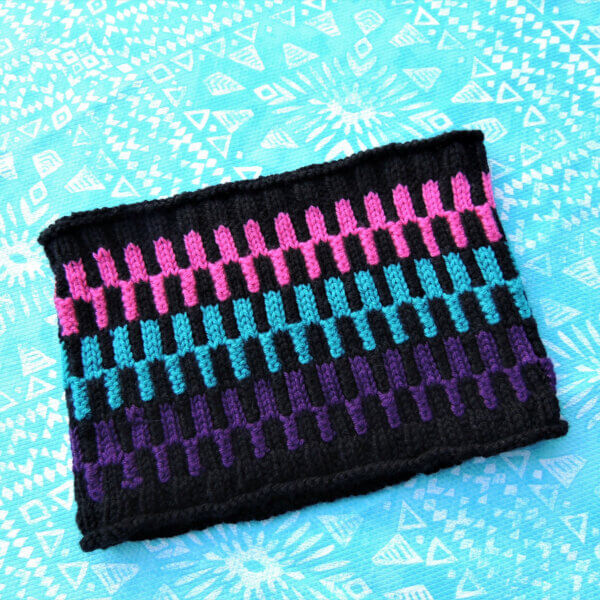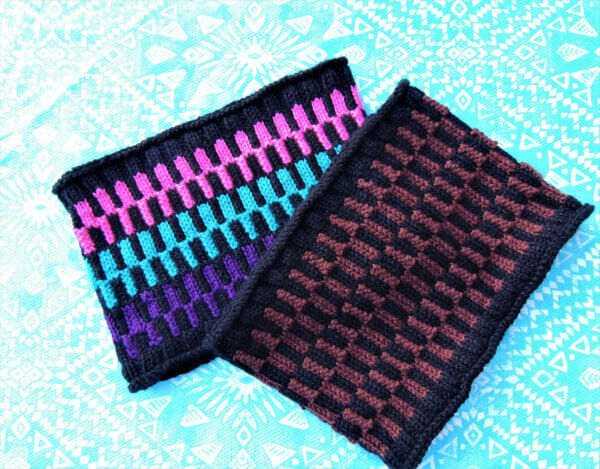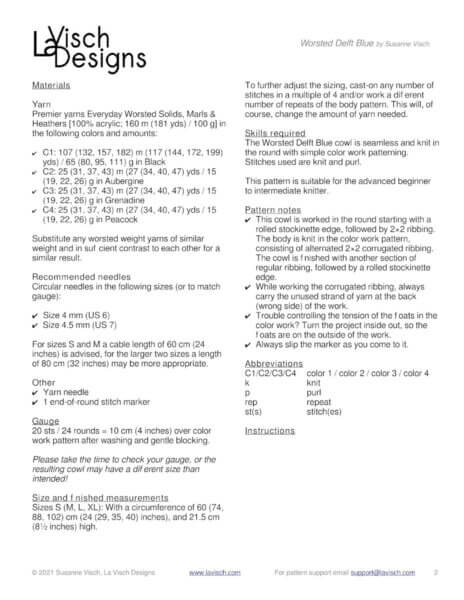tutorial – changing a skp to a k2tog
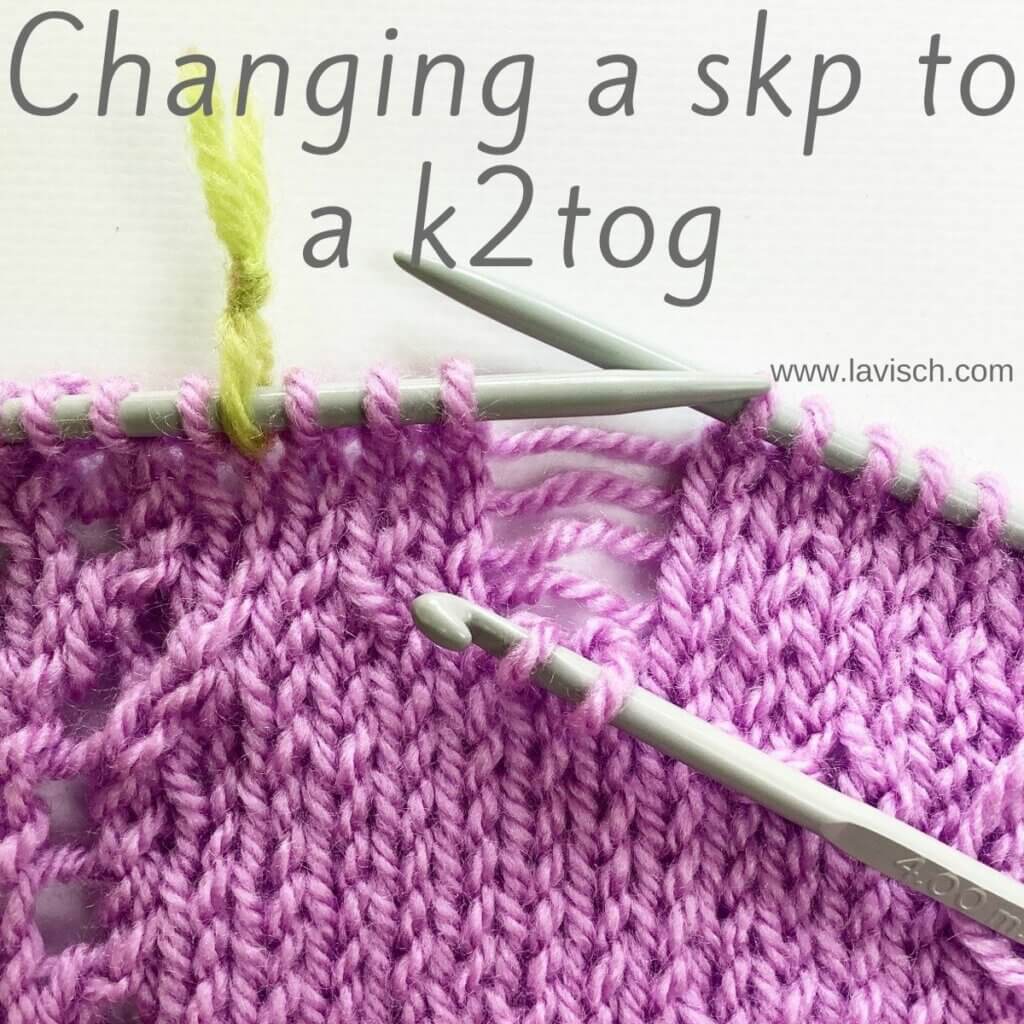
This tutorial is part of the series on fixing mistakes in knitting. When knitting lace or shaping in garments it can easily happen that a left-leaning decrease is worked where a right-leaning one was needed. Or vice versa, of course. And because I really don’t like ripping out my work, I’m showing how to drop down several rows in your knitting and how to go about changing skp to k2tog.
Materials used
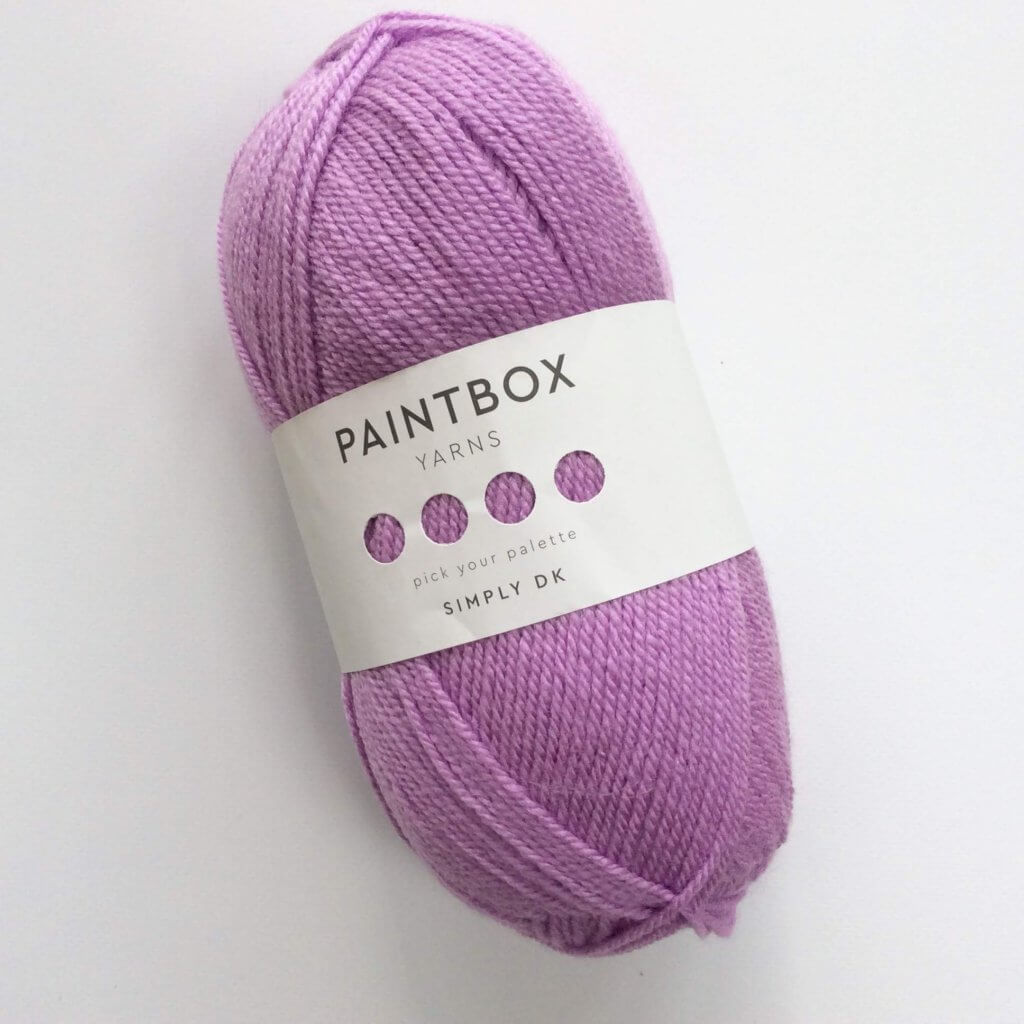
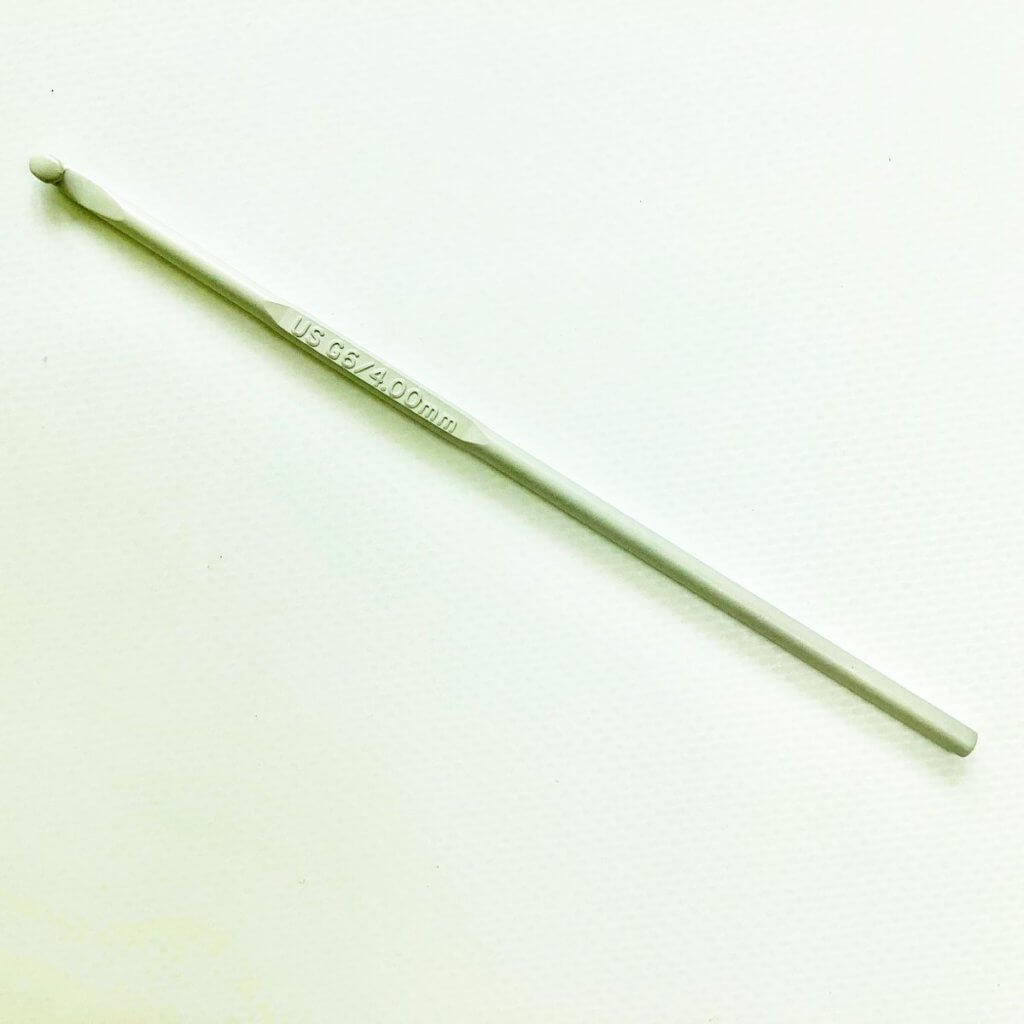
Yarn: * Paintbox Yarns Simply DK, a good value, good quality 100% acrylic yarn, here in the color 142 Tea Rose.
A crochet hook in the same size or slightly smaller than your knitting needles. For example this * Pony Aluminum Crochet Hook in size 4 mm.
Changing a skp to a k2tog step by step
- First, slip the stitches purl-wise from the left-hand needle to the right-hand needle, until you reach the stitch directly above the wrongly worked decrease.
Do you see it, 4 stitches below the needle?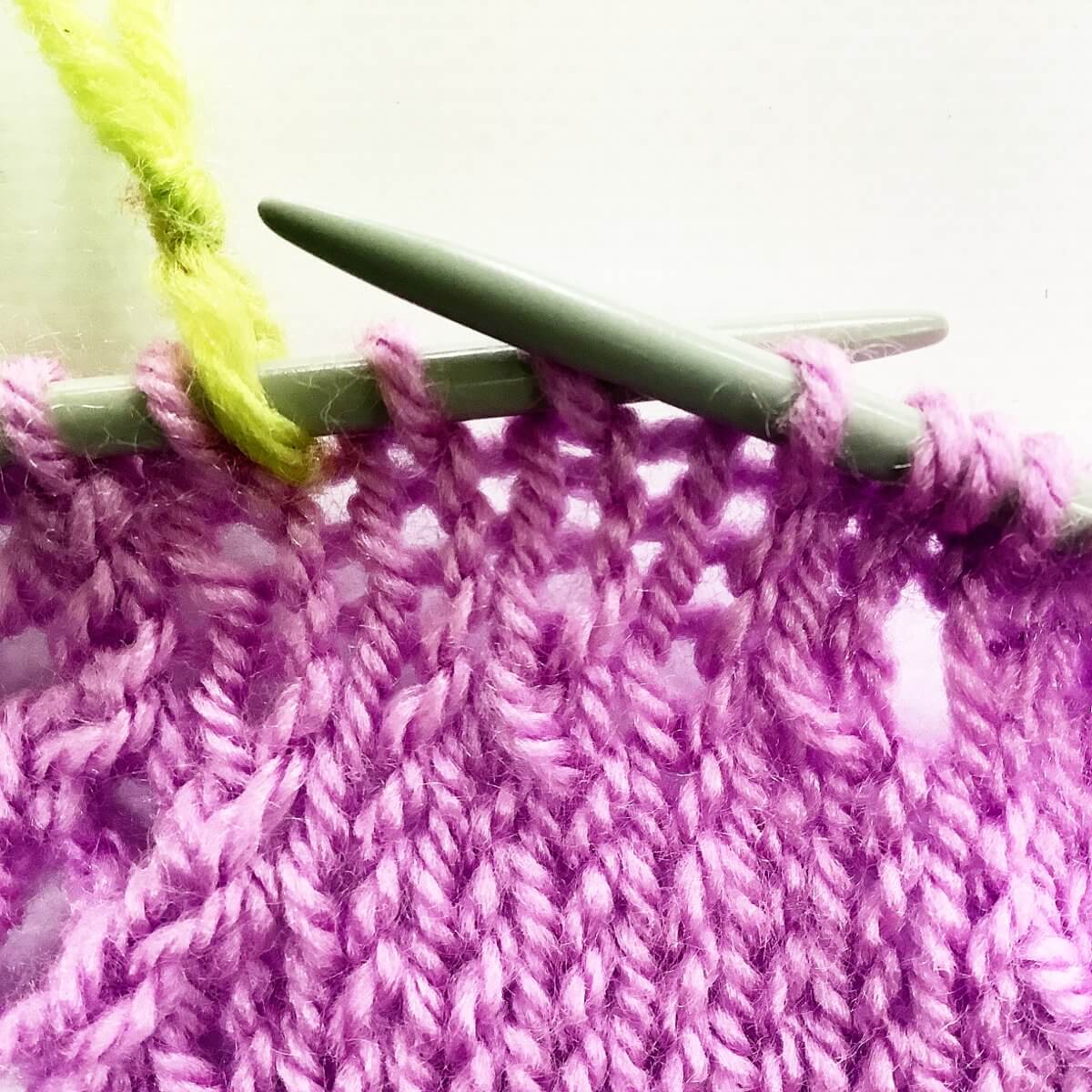
- Now drop down the stitch.
Ladder it all the way down until the decrease is undone, and you have 2 stitches instead of 1.
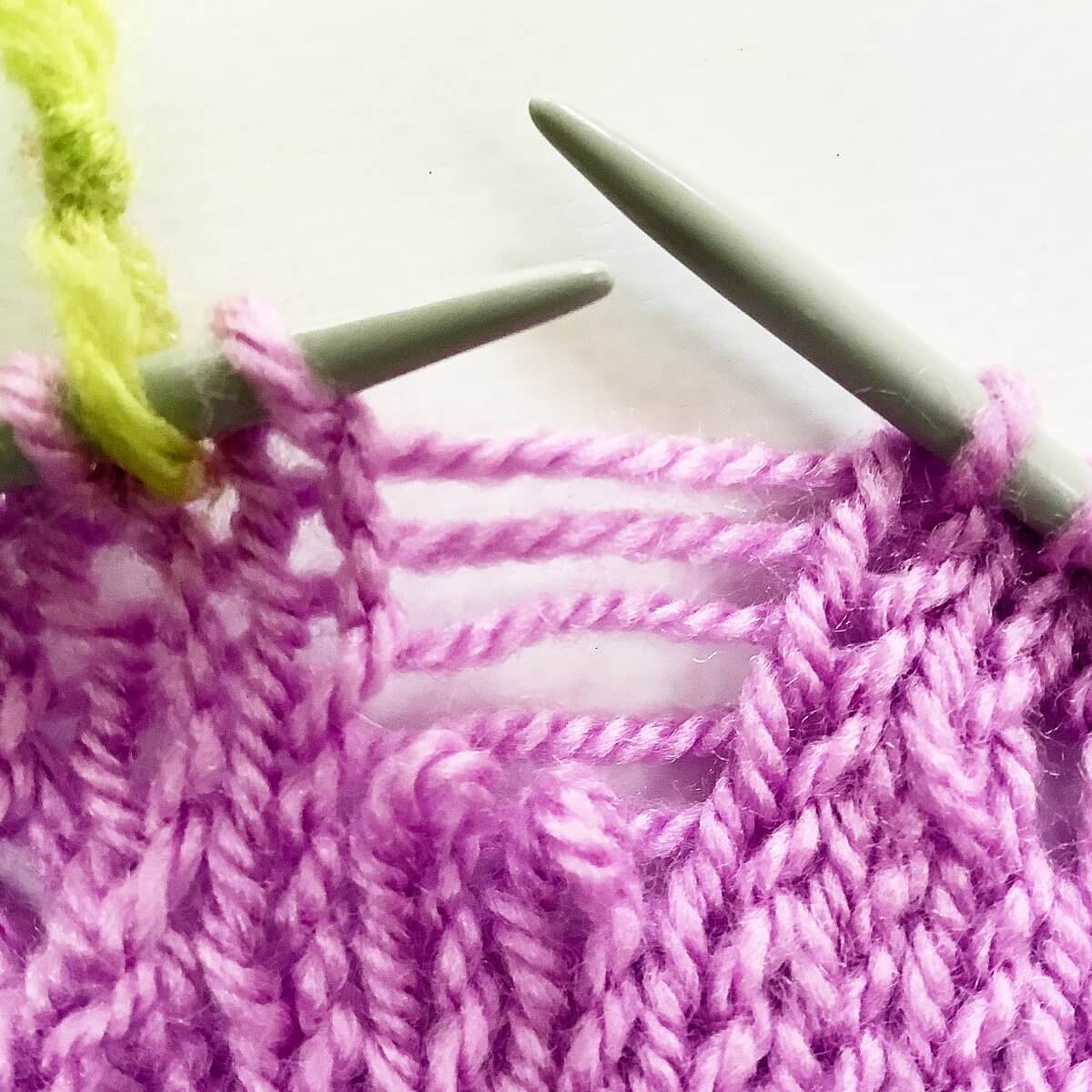
- Catch these 2 stitches with the crochet hook.
Make sure to insert the hook from left to right through the stitches.
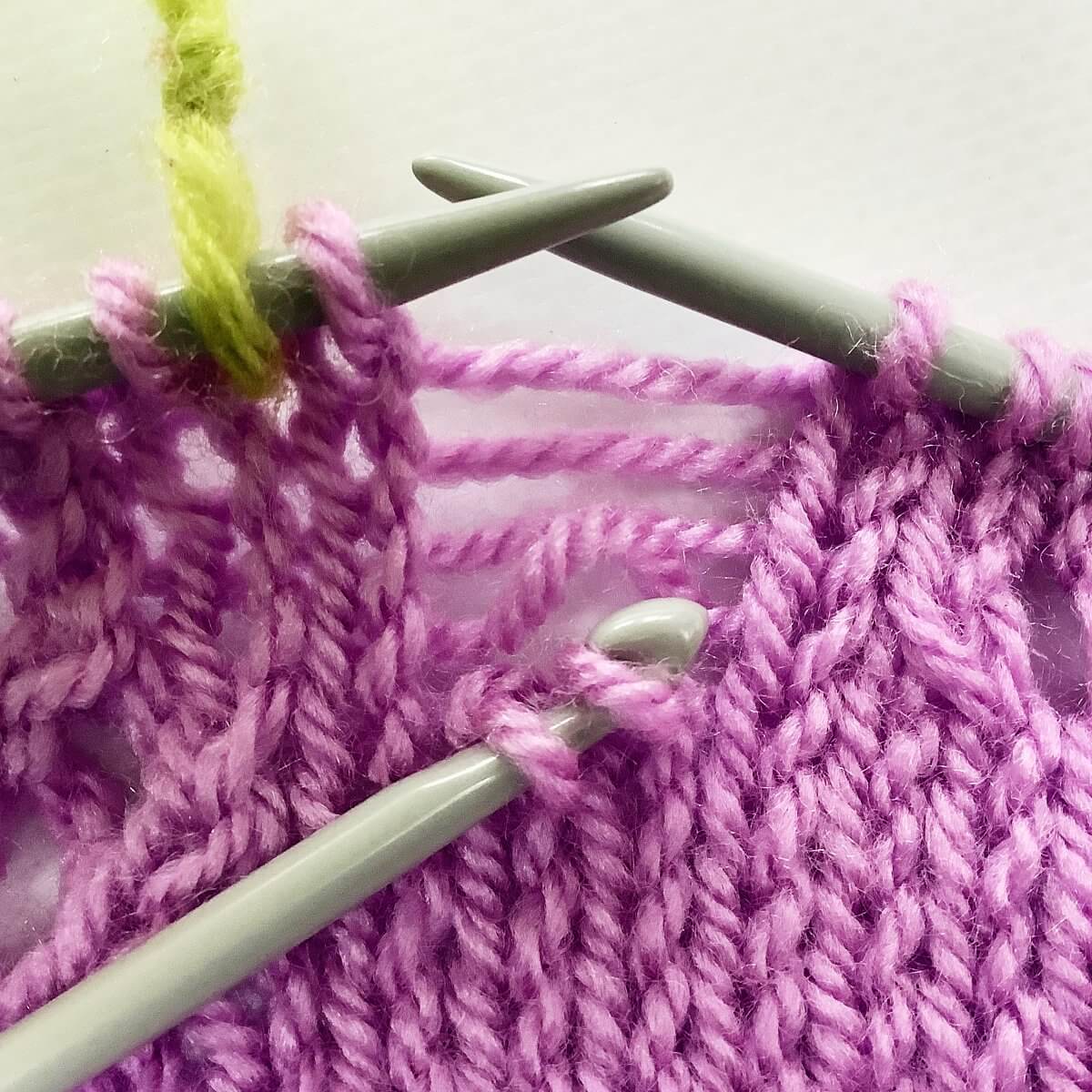
- Next, it’s time to start working the k2tog decrease.
To do so, insert the crochet hook below the first horizontal thread running directly above the 2 stitches on the hook.
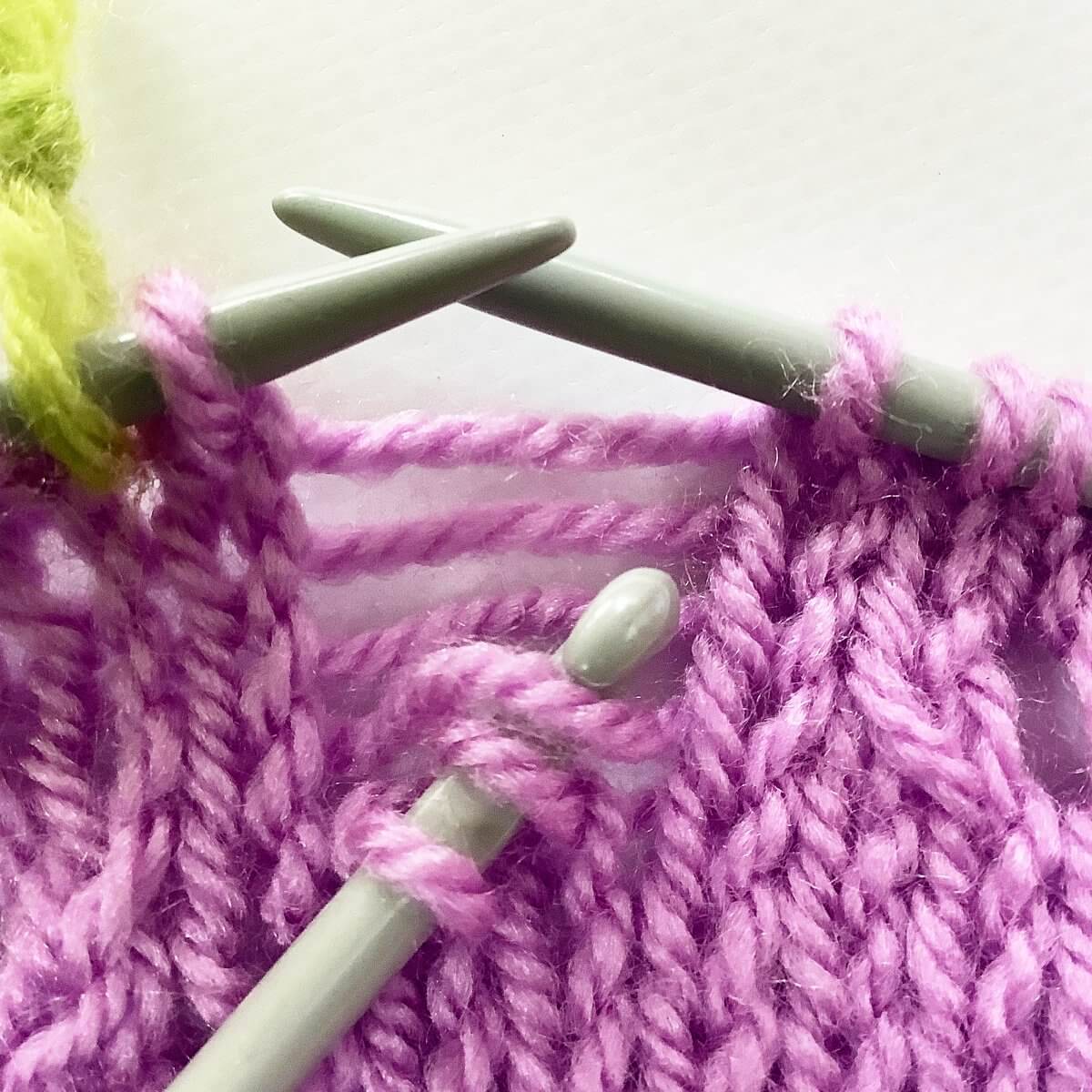
- Next, pull the horizontal thread through the both stitches on the hook.
This completes the k2tog decrease. In the picture below you can see that the decrease now leans to the right instead of to the left as it was originally.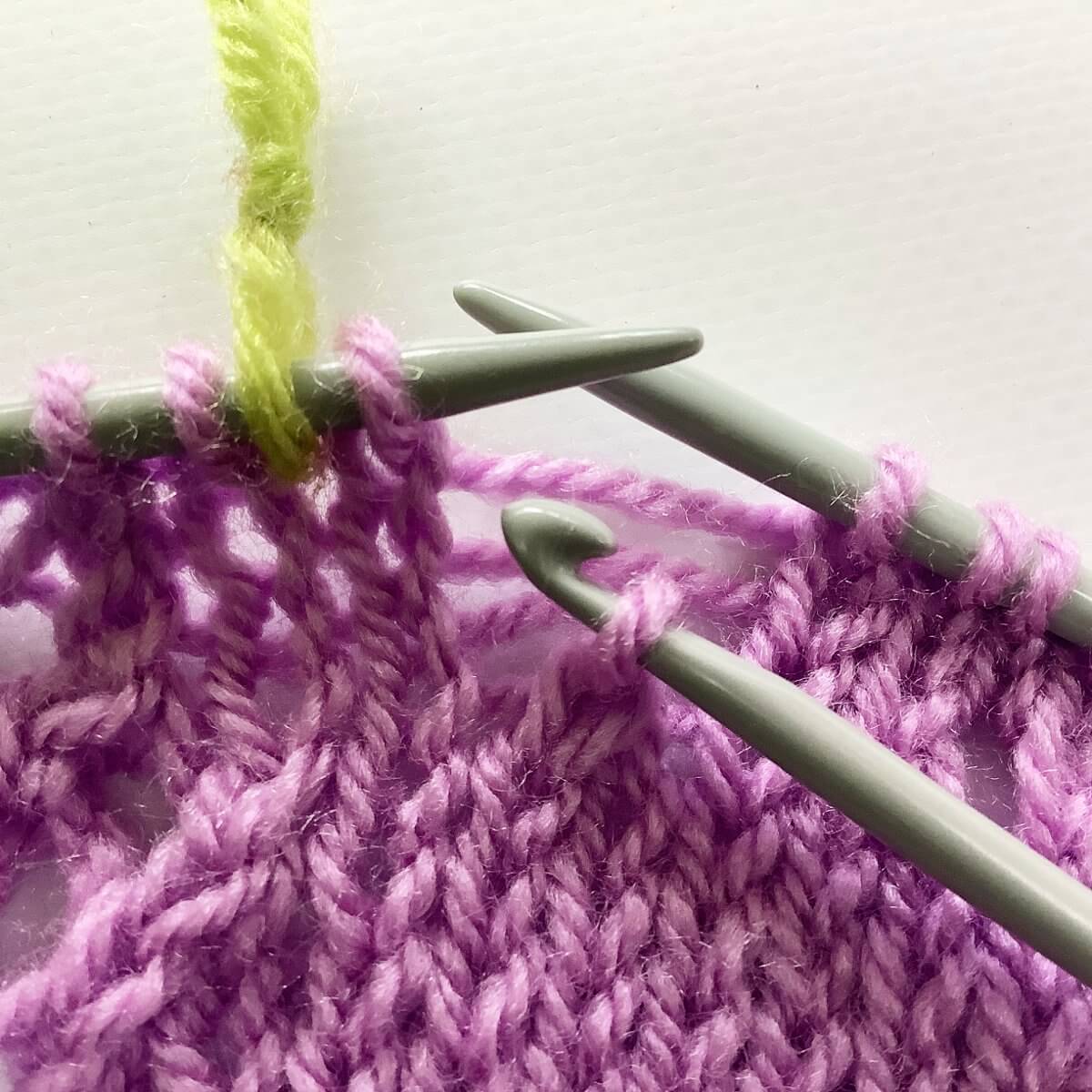
- Finishing up.
Next, ladder your way up again by inserting the crochet hook underneath the horizontal thread directly above the hook, and pulling the thread through the loop already on the hook to make a new knit stitch. For stockinette, repeat this until all horizontal threads have been worked. After this you can place the stitch back unto the knitting needle.
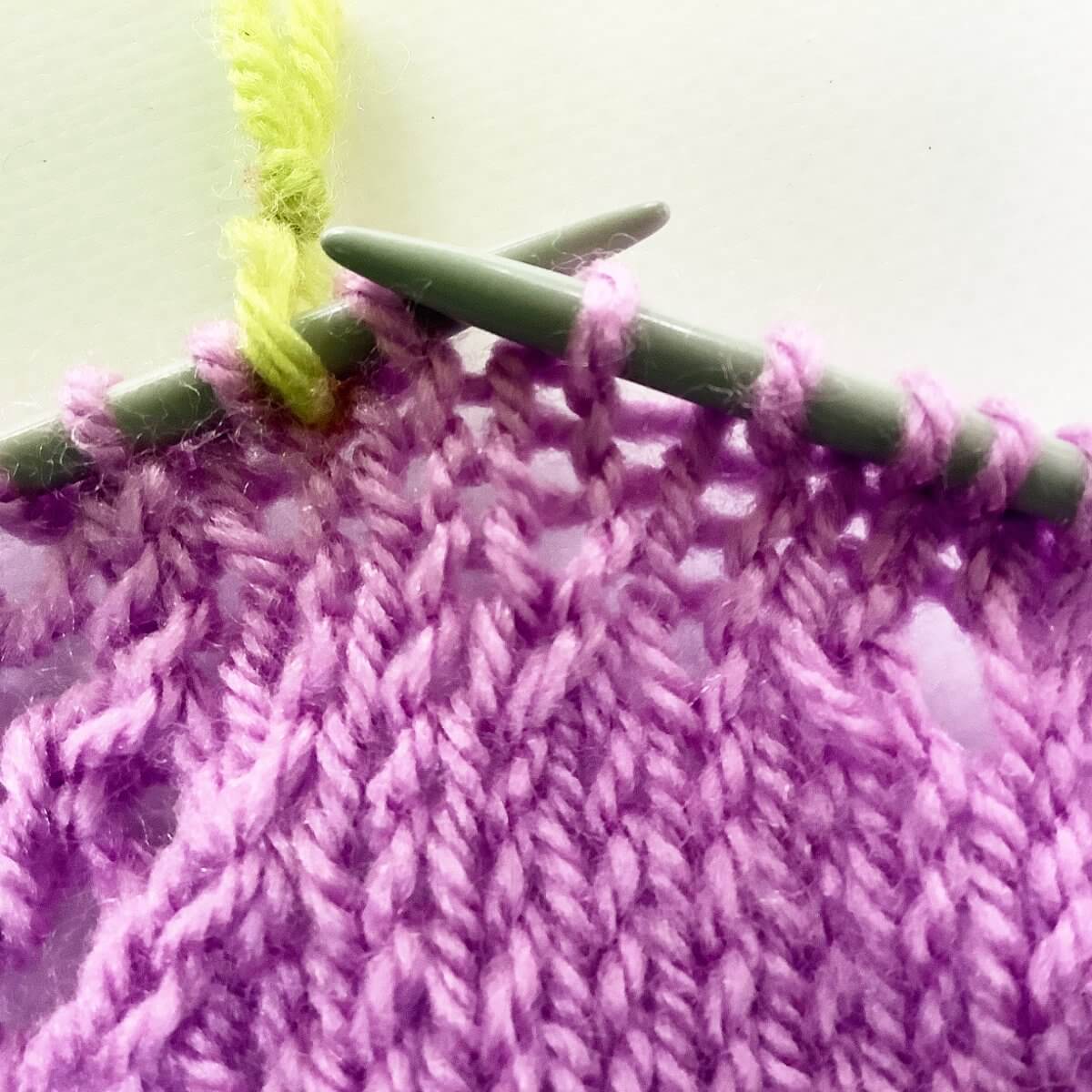
And that is how you go about changing a skp to a k2tog, several rows down in your knitting! I prefer knitting skp instead of ssk for my left leaning decreases, but the same principles apply to that too:
- Just drop down the stitch directly above the decrease
- Catch the stitches
- Work the correct decrease using the first horizontal thread above the stitches as your working yarn
- Ladder your way back up again.
That’s all there is to it!

Thanks to my Patreon supporters for bringing you this freebie! Creating quality patterns and tutorials is a lot of work and resource-intensive. However, I find it important to give you free content like this tutorial. Thanks to the generous support of my Patreon supporters, I can make it happen. Thank you, patrons! Click here to join, or click here to read more about La Visch Designs on Patreon.
tutorial – changing a skp to a k2tog Read More »

